Member Blog: Sleep-Focused Brands Are Seeing Bottom Line Dividends

By Jackie Berg, HealthHub
Nearly 40% of the nation’s top 100 CBD brands focus on need states. Chief among them is sleep, something the American Academy of Sleep Medicine (AASM) reports that 85% of Americans are falling far short of.
The 7.2 million sleep-related Google searches logged this past year provide ample evidence of interest. according to NBC News, which reports that 9 million Americans take prescription drugs to help them fall asleep.
Others prefer more natural solutions.
Nearly 11 million rely upon CBD and/or cannabis-based products to manage insomnia or sleeplessness, according to a 2021 report issued by High Yields Insights. Among them, almost 70% are women considered statistically more likely to suffer from insomnia.
YOUNG AND RESTLESS
Millennials are driving the bulk of market growth. Together, with a smaller percentage of Gen Z consumers, these severely stressed consumers represented 48% of the U.S. CBD market in the fourth quarter last year, according to High Yields Insights President Mike Luce.
Regardless of age or gender, brands like CBDfx are discovering that an ever-increasing number of their customers are using CBD to treat sleep-related issues. The Brightfield Group reports more than 58% of CBDfx customers purchased sleep products in the fourth quarter.
Collectively, 40% (4 in 10) of consumers, rely upon CBD to manage insomnia or sleeplessness, according to a recently issued High Yield Insights and InnovateMR 2021 sleep trend report.
FIGHTING FOR SLEEP
Growing pandemic-related uncertainty, anxiety, and associated sleep deprivation issues have kept sleep specialists like Colorado-based Pulmonologist Dr. Julie Whitaker, struggling to manage ever-increasing patient loads.
“We’re not seeing everyone we should,” says Dr. Whitaker, who sees the need to elevate the understanding of the importance of sleep, particularly among Americans.
The pandemic helped to elevate awareness of the importance of good sleep and has softened the momentum of the “sleep is for suckers” mantra, according to the pulmonologist.
CBD and cannabis brands are seeing significant growth, most notably among 25 to 35 year-olds. Although millennials dominate the growth trends, one brand reported moms 40 – 50 years of age are among its fastest-growing demographic.
Veterans, known to experience higher levels of insomnia (57% veterans) than the general population (30%), face elevated pandemic-related risks. Among veterans with Post-traumatic stress disorder (PTSD) or a traumatic brain injury (TBI), the rates are even higher — 93%, according to the Department of Veteran Affairs in San Diego.
Sleep specialists, like Whitaker, are particularly concerned about the stress levels in at-risk populations, particularly women- and veteran-headed households, whose support needs are more imminent.
When it comes to sleep, routines are important, according to the specialist who recommends patients develop healthy and consistent sleep routines, avoid consuming alcohol and OTC products known to disrupt sleep cycles, particularly antihistamines known to disrupt healthy sleep patterns.
CBD AND CANNABIS EFFICACY GROWING
In regard to other solutions, Dr. Whitaker says there’s “reasonable scientific evidence,” that CBD, particularly when combined with a small amount of THC, can help promote sleep.
Two in five working moms use cannabis, according to a newly minted survey released by San-Francisco analytics firm Lucky Analytics.
Women are helping cannabis brands like Ganja Goddess achieve record-breaking triple-digit sales growth. The cannabis company reports a 635% increase in its sleep lines last year, according to its SVP of Marketing Heidi Genrich.
Gummies provide a popular entry point, according to Incredible Edibles Brand Director Jessica Benchetrit, whose company helps make cannabis more accessible via entertaining and informative educational sessions.
“Consumers are looking for an enhanced sleep experience, says Benchetrit. “The majority (78%) are actively seeking out ‘indica-like’ edibles.
Incredibles’ Snoozzzeberry gummies climbed to the number one infused gummy product in the markets it sold in, during the fourth quarter of last year, according to BDS analytics reports.
REVEALING RESEARCH
A 2019 study published in the Journal of Alternative and Complementary Medicine, found cannabidiol (CBD) improved the sleep quality and reduced nightmares of 38% of the participants, all of whom had PTSD.
Joseph Maroon, M.D., a clinical professor and neurosurgeon at the University of Pittsburgh Medical Center who has researched the effect of cannabis on the brain, says that CBD has properties that could help some people sleep better. Most notably, he says, it appears to ease anxiety and pain, both of which can make it harder to fall asleep or stay asleep, according to a published statement in Consumer Reports.
“CBD is safe,” says Dr. Daniel Clauw, an internationally known pain expert and head of the University of Michigan Director of Chronic Pain and Fatigue Center, who frequently collaborates with the Arthritis Foundation on education efforts.
Among sleep associations, the American Sleep Association has indicated that cannabis may help induce sleep in people with insomnia, anxiety or post-traumatic stress.
A MEANINGFUL IMPACT
“People are interested in better ways to relax at the end of the day,” says Ginrich. “And they are increasingly concerned about safeguarding their well-being over the long term.
“Stress and anxiety are not going away, so products and rituals that help people sustainably manage these pressures are in high demand,” adds the Ganja Goddess Marketing Director.
We all have a role to play in helping put America’s sleep issues to bed.
 Author Jackie Berg is the publisher of the Health Hub, a publication division of CBD Marketing Hub, as well as the publisher of TheHUB Detroit, TheHUB Flint and recipient of the Association of Women in Communications 2018 Vanguard award. To learn more CBD Marketing Hub, a cultivator of CBD and cannabis clients, visit its website or reach out at hello@cbdmarketinghub.com.
Author Jackie Berg is the publisher of the Health Hub, a publication division of CBD Marketing Hub, as well as the publisher of TheHUB Detroit, TheHUB Flint and recipient of the Association of Women in Communications 2018 Vanguard award. To learn more CBD Marketing Hub, a cultivator of CBD and cannabis clients, visit its website or reach out at hello@cbdmarketinghub.com.
Member Blog: Strategies to Reduce Indoor Cultivation Facility Energy Costs
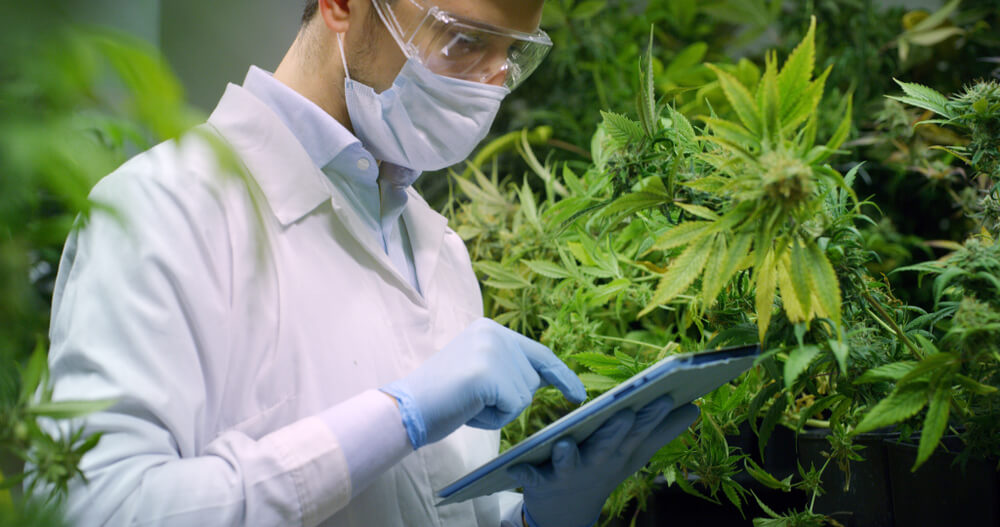
by Jason Magnuson of Mintropy
Indoor cannabis cultivation facilities are complex environments, where a large number of variables interact to create an ideal ecosystem to grow cannabis. The upside of an indoor facility is it allows a year-long growing climate, optimized for each stage of the plant grow cycle. The downside, however, is creating this ideal climate is very energy-intensive.
The total energy costs for indoor cannabis grow operations typically vary between 20%-50% of total operating costs (approximately 120-150 kWh/sq.ft). In comparison, energy use in a typical commercial building environment is approximately 25 kWh/sq. ft. As indoor cultivation facilities increase, they can be a source of strain on electrical grids. A recent study showed indoor cannabis cultivation alone accounted for 4% of the energy grid usage in Denver. (IEEE, 2020)
With that context, any areas we can identify to improve energy efficiencies without introducing a negative impact to the grow environment can have enormous bottom-line impacts for cultivation owners and society at large.
In this article, we are going to be examining two ways we can optimize HVACD systems to improve energy efficiency. When HVACD systems are designed for grow facilities, the primary variables we are looking to influence are the following psychrometric properties: temperature (either wet or dry bulb) and relative humidity. Mechanical engineers will often refer to an information-packed graph called a psychrometric chart shown below.

This chart helps to visualize the relationships different properties of air like temperature, humidity (relative and absolute) and dew points along the saturation curve have with each other. This is useful to analyze, as these are direct inputs to a scientific measure often favored by growers called Vapor Pressure Deficit (VPD).
Vapor Pressure Deficit, simply described, compares these variables to determine how much additional room for water vapor there is in the air. This is important as it determines how well cannabis plants can transpire. Controlling transpiration rates help to aid in healthy, robust growth through the plant life cycle. Growers tend to want lower VPD, and thus lower transpiration, early in plant maturity, and increase to higher VPDs, and thus high transpiration, at the flowering stage before harvesting.

So we know a successful indoor cultivation facility HVAC system will need to control temperature and humidity to ensure the desired VPD values. How can we do that efficiently?
Stand-Alone Dehumidifiers Are Inefficient
A cannabis plant can transpire up to 99% of the water absorbed through its roots. Due to this, we often tell people that designing an Indoor Cultivation Facility is like designing a Data Center with a swimming pool inside. Because of the increased humidity introduced from plant transpiration, we must pay special attention to dehumidification strategies within the grow space. Humid air requires treating significant latent loads in the grow space, requiring additional energy to remove moisture from the airstream. This is one reason HVACD systems can consume up to 50% of the energy budget in a cultivation facility. As previously mentioned, higher humidity levels will lower the VPD in the room, preventing a plant from transpiring effectively to continue healthy growth. To combat this, sometimes stand-alone dehumidifiers are added into the grow room.
While these units can do the job of removing moisture from the room, it is a very energy-intensive process. One of the issues with stand-alone dehumidifiers is that they reject heat back into the grow room, thereby adding additional cooling load onto the main HVAC equipment.
Integral Hot Gas Bypass System
An air handling unit, sometimes called an air handler or AHU, is a piece of equipment that is used to condition and circulate air as a component of a heating, ventilating, and air conditioning system.
The air handler is usually a large metal box that contains a blower, heating and cooling elements, filter chambers, sound attenuators, and dampers. It then connects to ductwork that distributes the conditioned air throughout the space before returning it back to the AHU.
Of particular interest are the units cooling coil and reheat coil. These two components are namely responsible for controlling VPD levels in our grow space. In an Integral Hot Gas Reheat AHU, the cooling coil serves as a dehumidifier, by cooling the air thereby reducing its moisture/latent load (we highly recommend capturing this water for treatment and reuse: read more here). The hot gas reheat capability utilizes heat from grow space and compressor heat to reheat the air before returning to the grow space (without using additional heating energy).
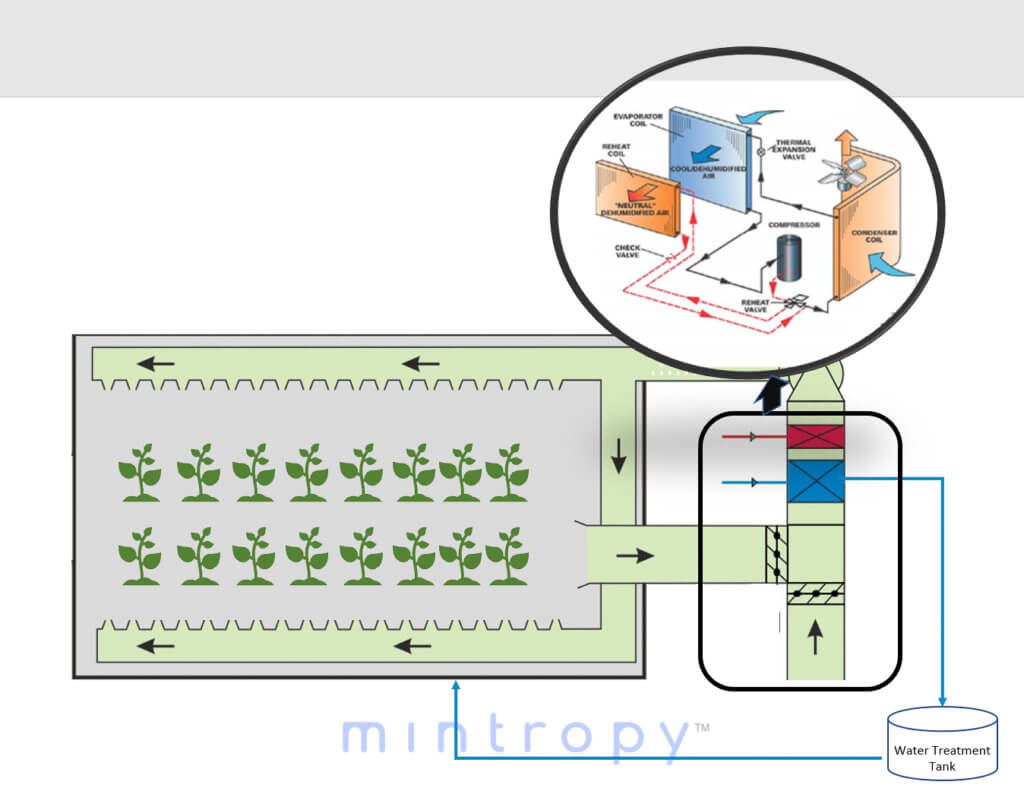
While this may seem like a minor design change, it results in a considerable reduction in energy. As the chart below illustrates, leveraging the Integral Hot Gas Bypass AHU units can result in a 30-35% reduction in HVACD energy when compared with other dehumidification systems. Additional automation capabilities built-into these systems will ensure that the grow room will remain tightly controlled within the desired state points of your grow room to optimize VPD.
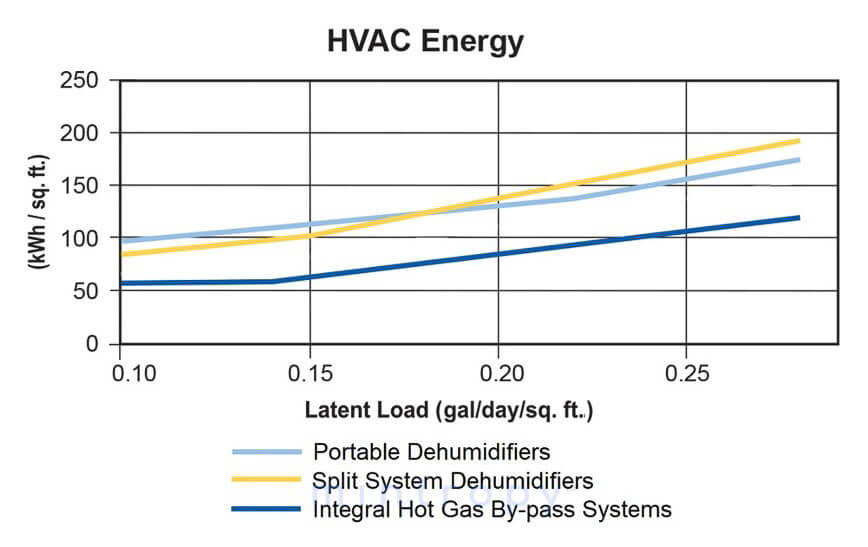
This reduction in energy quickly adds up to reduced utility bills. Despite marginally higher upfront costs as compared to standard HVAC equipment coupled with standalone dehumidifiers, this option results in a lower 5-year system cost than common HVACD systems installed in cultivation facilities, and these savings will only increase over time.
Maintaining Consistent VPD, but at higher Temperature / Humidity Ranges
The second energy-saving measure we would like to discuss goes back to the earlier discussion of VPD. Recall the equation for VPD is
V P sat – V P air = VPD
This is important, as it provides growers the flexibility to fall within desired VPD ranges, but at higher temperature and humidity ranges than typically used. Many growers target maximum temperatures around 70-75F and limit relative humidity to a maximum of 50 percent, but by allowing slightly higher maximum room temperatures of 75-80F, with corresponding relative humidity increases, we can create identical VPDs. The cost-benefit of this small adjustment is considerable. The HVAC system (including cooling and dehumidification) can be sized at roughly 20-30% smaller capacity, reducing the grower’s up-front equipment costs. In addition, the system’s energy consumption and costs during operations will be significantly lower, to the tune of 30-40%. In a theoretical 30,000 square foot facility, this could result in a $1,300,000 savings in the first 5 years.
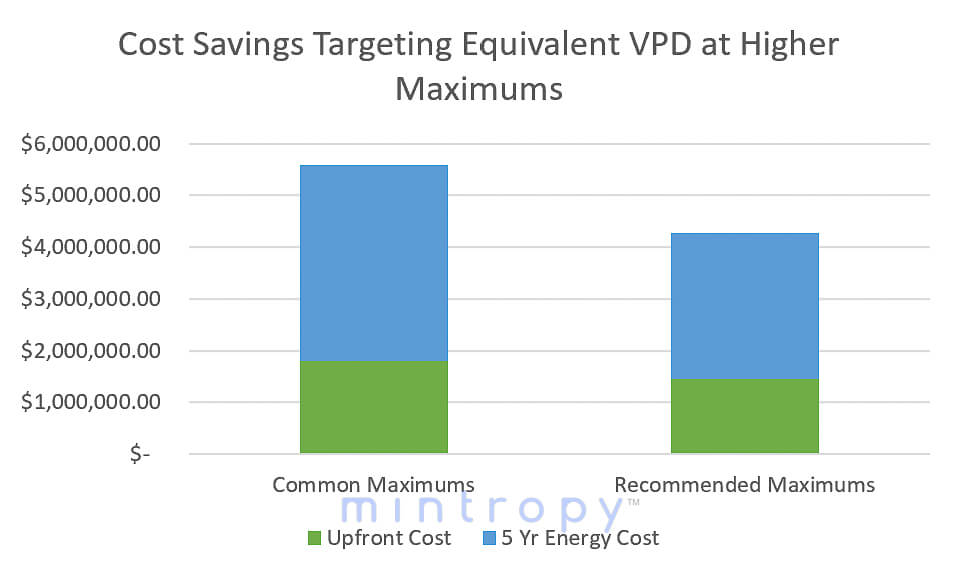
 Jason Magnuson is the Director of Business Development at mintropy. Mintropy is an MEP (Mechanical, Electrical, Plumbing) Engineering Design firm, with a focus on Indoor Cultivation Facility and Dispensary design. At mintropy, we strive to minimize entropy (minimize disorder) in building systems, by creating innovative and efficient designs to meet our client’s needs. For assistance in your cultivation facility, be it auditing/upgrading existing systems or designing new, reach out to us today.
Jason Magnuson is the Director of Business Development at mintropy. Mintropy is an MEP (Mechanical, Electrical, Plumbing) Engineering Design firm, with a focus on Indoor Cultivation Facility and Dispensary design. At mintropy, we strive to minimize entropy (minimize disorder) in building systems, by creating innovative and efficient designs to meet our client’s needs. For assistance in your cultivation facility, be it auditing/upgrading existing systems or designing new, reach out to us today.
Committee Blog: Crafting a COVID-19 Vaccination Policy for Your Cannabis Company

By NCIA’s Human Resources Committee
COVID-19 vaccine policies are just the latest challenge for employers as the world continues to adapt to life after coronavirus. COVID-19 has forced employers to be much more actively engaged in monitoring our employees’ health and your company’s approach to a vaccine policy may continue to reflect the unusually intimate partnership between employers and employees in protecting the health of our communities.
Business owners may be eager for operations to return to normal after nearly a year of intense focus on disruptive business practices made necessary while we responded to the COVID-19 pandemic and its implications for the workplace. While a widely vaccinated public has been promoted as the light at the end of this tunnel, over a third of Americans are reluctant to get the vaccine. This is where employers can make a difference in the trajectory of our national vaccine project by encouraging, and even requiring, employees to be vaccinated. Cannabis industry operators should be especially concerned about crafting a careful approach to vaccine policy as many of our workers have been declared essential throughout the pandemic and we provide services to some of the most vulnerable in our communities including those with chronic illness, the elderly, or those with compromised immune systems. Yet, in many states, cannabis business owners and human resources departments continue to struggle with unclear guidance about when our employees will be able to get the vaccine.
What role do cannabis employers play in vaccination against COVID-19?
Employers will have to navigate a number of competing interests and obligations to craft a sound and responsible vaccine policy. On the one hand, employers are obligated to provide a workplace that is “free from recognized hazards” (OSHA General Duty Clause), i.e. persons infected with the coronavirus. On the other hand, employers are generally more hands-off when it comes to personal health decisions like whether or not to get vaccinated against certain illnesses, and indeed we have an obligation to protect our employee’s privacy and right to refuse vaccination due to a religious objection or medical condition. There is no shortage of advice available to cannabis companies but much of this advice fails to explore the real-world challenges that HR practitioners and business owners will face as they navigate vaccine issues with employees on the ground over the coming months, partly because we are wading into uncharted waters. Below is a brief summary of what information is available to guide employers right now.
Employers must be prepared to take a position on vaccines
The Equal Employment Opportunity Commission has provided guidance for employers navigating their approach to vaccination at the workplace. In general, the EEOC supports employers’ right to encourage or require employees to get vaccinated against COVID-19, as well as take other precautionary measures recommended by the Centers for Disease Control. There is a persuasive business necessity to, at a minimum, encourage employees to get vaccinated against COVID-19, and cannabis companies may find that their employees are relatively prioritized in many state vaccine distribution plans due to the prevalence of designating cannabis workers as essential, though guidance specifically pertaining to cannabis workers is slow-coming and vaccine availability has gotten off to a rocky start with an uncertain supply of vaccines. At least for the time being, multi-state employers will have to continue to adapt to a patchwork of various approaches to state vaccine distribution plans just as they have for managing the workplace throughout the pandemic.
Be ready to accommodate legitimate objections
Employers must also proceed cautiously when responding to employees who refuse vaccination. Some employees who resist vaccination will have a legitimate right to be accommodated due to a sincerely held religious belief or a medical condition that prevents them from taking the vaccine. Employers must be ready with a flexible policy that allows qualified personnel to engage in an interactive process with these employees to discover and document the nature of their objection and then to negotiate a reasonable accommodation. For those positions that have already been eligible for temporary work from home arrangements, for example, an extension of this arrangement might be a reasonable alternative to vaccination. Other accommodations can be made for employees who must interact with the public or their coworkers to perform their essential job functions, such as leave of absence, but how soon such an employee would be excluded from the workplace given the scarcity of vaccine availability and under what conditions this employee would be allowed to return to the workplace are still open questions.
Vaccines remain one of many tools employers have to reduce risk
The Society for Human Resources Management (SHRM) published research earlier this month revealing that the majority of employers plan to encourage but not require their workforce to be vaccinated against COVID-19. This approach seems to dodge some of the more troubling aspects of rolling out a mandatory vaccine program and reflects the reality that many employers can use a combination of other means to reduce the risk of transmitting the virus such as the continuation of work from home policies, virtual services, contactless product delivery, etc. A mandatory program would force a confrontation between those employees who are unwilling to get vaccinated and the company’s managers tasked with tracking vaccination, avoids potential workers compensation claims that might arise from adverse reactions to the vaccine, and provides relief for the potential administrative burden of tracking employees’ proof of vaccination. A voluntary vaccine policy also restores some of the onus for making an informed decision about vaccines on the employee rather than the employer assuming all the responsibility, and potential liability, for forcing a decision to become vaccinated on the workforce. Keep in mind that even under mandatory vaccination policies, some employees will inevitably not get vaccinated and the company will need to work with those individuals on a case by case basis to determine what reasonable accommodations, if any, can be made for those workers. Employers who mandate vaccines as a condition of employment will also likely need to pay for vaccination if there is a cost in the future as well as provide paid time off for employees to go to vaccine appointments. A voluntary policy may make it easier for the employer to be flexible and compassionate toward the varying needs and attitudes of our employees while navigating the continually evolving state of vaccine availability and public health advice.
Expect to adapt to new information
Throughout the pandemic, employers have operated with ambiguity and uncertainty. This (hopefully) final stage of the pandemic will be no different. As we craft our vaccine policies, we should be prepared to deal with the unexpected and adapt to change as new information is available or revised. This is where I believe that cannabis companies have a real advantage. In this industry, flexibility and innovation are essential skills and we as professionals in this industry are well-practiced at pivoting with little notice. I am confident that cannabis operators will rise to the challenge of navigating vaccine distribution while protecting our workers and our customers with the same aplomb that has helped our industry thrive during the challenging last 12 months.
 Melissa Hafey is the Director of Human Resources for Blackbird. Blackbird is a software and services company that provides marketing tools and transportation solutions for cannabis operators. Melissa is a passionate advocate for creating meaningful work in rewarding work environments. Her experience includes change management, benefits administration, HRIS implementation, recruiting, workplace diversity initiatives, and human resources management across multiple states including California.
Melissa Hafey is the Director of Human Resources for Blackbird. Blackbird is a software and services company that provides marketing tools and transportation solutions for cannabis operators. Melissa is a passionate advocate for creating meaningful work in rewarding work environments. Her experience includes change management, benefits administration, HRIS implementation, recruiting, workplace diversity initiatives, and human resources management across multiple states including California.
Member Blog: Reducing Labor and Trichome Degradation with Drying and Curing Solutions
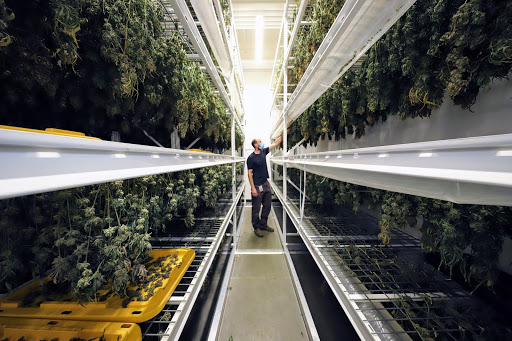
by Michael Williamson, Director of Cultivation at Pipp Horticulture
Cannabis production strategies may differ from one facility to another, but most facilities share a common goal: to produce the highest quality product at the lowest cost. One area of the cultivation cycle that is often overlooked but has great potential for optimization is the drying and curing process.
Many cultivators use bins or totes to harvest, weigh and transfer cannabis plants to the drying room. The plants are then manually hung one by one on wire, pipe, hangers, hooks, and/or racking.
Once the product has been dried it is then manually unhung plant by plant and placed back into the bins or totes. These are then transferred to trimmers to process into the finished product. These transfer events have significant labor costs and more importantly can reduce quality by degrading trichomes and associated cannabinoid and terpene content.
In lean farming and manufacturing, we refer to these actions as non-value adding touch points. The process outlined above is not only cost-intensive for the producer, but also one that reduces quality and value to the end consumer, who should be at the center of every decision a cannabis producer makes.
Let’s take a look at two options that allow operators to reduce labor and associated costs while producing a higher quality product. Below, we introduce you to drying carts and drying racks solutions for your operation.
First thing’s first: Ditch the Bins
Many growers use plastic bins or totes to help them harvest. An inexpensive and simple solution, binning plants has been a common method amongst growers.
Unfortunately, it greatly increases labor requirements due to the many staff and non-value adding touch points with the plants. These touch points also negatively impact the final quality of the product as the terpenes and trichomes are disturbed each time.
Bins or totes also present additional and unnecessary cross-contamination, workflow, and labor challenges. They need to be cleaned and sanitized after each batch or during daily use. Many facilities are not set-up or staffed appropriately to properly clean and sanitize bins and totes regularly.
In addition, bins and totes take up a tremendous amount of space, which is often not taken into consideration during the facility design process. They are often stacked or nested one on top of another. If these bins are not cleaned and have been dragged on the floor, operators risk contaminating their cannabis plants and dried flowers that come in contact with the inside of the bins.
Labor is the biggest cost for a cultivation operation. And as it so happens, the harvest and post-harvest team is often the largest department by headcount.
By introducing equipment such as drying carts or racks, operators can decrease their labor costs while increasing product quality, all without the use of bins or totes.
Optimize Your Drying Process
The first step in optimizing your drying process is to evaluate the space in your facility. There are two unique solutions to meet cultivators’ drying needs: mobile drying carts and mobile drying storage racks.
An easy way to tell them apart is to remember this: drying carts bring work to the workers while drying racks bring workers to the work.
Drying carts are mobile by design. Staff roll the drying carts into the flowering room being harvested and hang plants directly on the drying carts without the need for hangers or hooks.
The drying carts are then transferred to the drying room. Once the plants have dried, the carts are then rolled into the trimming room. The product moves efficiently around the facility with little to no touching of the actual plants.
Drying racks differ in that staff must still bring plants to the racks where they manually hang from the rack. A mobile drying cart can still be used for the transfer to eliminate the use of bins or totes. However, what sets these drying racks apart from common drying setups is that the racks can span the full height of the room, taking advantage of not only total available square feet but cubic feet as well.
There are pros and cons to both options. Ultimately, your operation’s capacity, efficiency, and labor demands will be the deciding factor.
Space Requirements
If space is not an issue, the ideal choice is drying carts for the points mentioned above: lower labor costs and higher quality product. The carts must be stored when not in use, and you’ll also need adequate space in your flower room for the carts to roll through the aisles. We recommend a minimum of 28” width aisles.
If you’re already tight on space in the drying rooms and are using trellis or cable wire, installing mobile drying racks will greatly optimize your room’s plant-drying capacity. Drying racks can help transform a tight, restricted space into an efficient one that supports your scaling business.
To get an idea of how much space is required for either racks or carts, we crunched some numbers for you below. Here, you can see how much square footage of drying space is required for each equipment option.
For this example, let’s consider 1000 harvested cannabis plants. The following space is required in your drying area for each solution (the range accounts for plant size and density):
- 2-tier drying carts: 300-600 sq. ft.
- 3-tier drying carts: 200-400 sq. ft.
- Mobile drying racks (4-tiers): 200-400 sq. ft.
You can see that the available space in the facility is the main consideration here. Let’s take a deeper dive into the pros and cons of drying racks vs drying carts.
Drying Carts
The Pros
- Ideal for purpose-built cultivation facilities that can dictate the size of the drying rooms
- No ladders or lifts required
- Drying carts have options for two or three levels of cantilever-style finger hooks, which eliminate the need to use hooks, zip ties, coat hangers
- Improves operational workflow by reducing non-value adding plant touches
- Improves trichome and terpene preservation by eliminating non-value adding touch points
- Eliminates the and use of bins/totes
- Brings the work to the workers
- Plants can be defoliated on drying carts if desired
- Less expensive than investing in drying racks
- Anti-fungal/bacterial coating option
- Easy to clean and sanitize
- Reduces labor to clean and sanitize drying rooms as room can be cleared of carts and equipment
The Cons
- Drying carts do not maximize cubic or square feet when compared to mobile drying racks.
- Drying carts that do not nest, break down easily with minimal tools
- Can be challenging to create linear queues in drying rooms
- Increased risk for finger and hand injuries
Drying Racks
(show image: “09 Pipp Hort Redbud mobile drying system Redbud Roots”) Photo Caption: Mobile Drying Rack Storage System ???? Redbud Roots
The Pros
- Drying racks are ideal for:
- Existing cultivation facilities with suboptimal sized drying rooms looking to retrofit
- New facilities that undersized their drying room and need to maximize every cubic foot
- Pre-operational facilities that are in the design phase and need to free up space for other areas of the design
- Typical racking height up to 16′ with 6 tiers
- Typical racking width options: 24″, 36″, 48″
- Drying racks support multiple hanging options from hang bars that allow for use of hooks and coat/plant hangers, wire grid, and fingers hooks
- Most efficient solution to maximize square and cubic feet
- Ability to scale by adding tiers based on phases or increased yields
- Anti-fungal/bacterial coating option
The Cons
- Requires lift or ladder to hang as well as take down
- More touch points, which leads to degradation of THC and terpenes
- Higher labor cost
- Racks bring workers to the work which involves the use of bins and totes and increased non-value adding plant touches
- Less efficient to clean and sanitize, compared to drying carts
Now that you’ve made it this far, you’re probably getting a good idea of which option (drying racks or carts) might work best for your grow space.
 Michael Williamson is the Director of Cultivation at Pipp Horticulture. Pipp Horticulture is the industry-leading provider of vertical farming and space optimization solutions. Our vertical mobile cultivation racks, Greenhaus grow trays, and innovative cart systems, create and optimize space for commercial agricultural facilities. We manufacture, design, and install products to optimize operational space throughout the cultivation, post-harvest, and distribution stages. For assistance in selecting and implementing the best drying solution for your operation, contact the team at Pipp Horticulture today!
Michael Williamson is the Director of Cultivation at Pipp Horticulture. Pipp Horticulture is the industry-leading provider of vertical farming and space optimization solutions. Our vertical mobile cultivation racks, Greenhaus grow trays, and innovative cart systems, create and optimize space for commercial agricultural facilities. We manufacture, design, and install products to optimize operational space throughout the cultivation, post-harvest, and distribution stages. For assistance in selecting and implementing the best drying solution for your operation, contact the team at Pipp Horticulture today!
Committee Blog: Property Insurance – The Good, the Bad, and the Ugly.

by NCIA’s Risk Management & Insurance Committee
How a Hardening Market is Limiting Coverage and How to Be Prepared.
2020 was one heck of a year. The insurance industry has experienced more claims this year than in the history of insurance with over a billion dollars in intentional property destruction alone. With the catastrophic claims from COVID-19, record-setting wildfires, civil unrest, and theft, expect property insurance rates to spike this year — and even more so if you’ve experienced a property claim.
Should an insured party that does not have a loss on their record expect an increase in their premium upon renewal? Simple answer, YES.
What is “commercial property”?
In the insurance world, commercial property is a lot more than just physical property — like cultivation equipment or a brick building. Commercial property coverage also includes (but is not limited to): loss of income, equipment breakdown, business property or equipment, inventory of others and finished stock that has been processed, packaged and ready for sale.
Commercial property insurance is not required but is highly recommended — your business could close due to a fire, theft, natural disaster, or other catastrophic loss. If your brand-new cultivation facility burns to the ground, you don’t want to be the one paying to build a new one out of your own pocket.
Property insurance is still an essential component of your insurance portfolio. There are many forms of property insurance that need to be considered. Property coverages include but are not limited to:
- loss of income (sometimes known as business interruption),
- tenant improvements,
- real property such as the building,
- business personal property,
- manufacturing equipment,
- cannabis inventory,
- signage,
- and property of others (in this case, any cannabis stock or equipment you may hold for another licensed operator).
Also, it’s important to understand the different forms of coverage available in property insurance. You can learn and understand the forms by looking at the property declaration page. There is basic, broad and special. Here is a breakdown of what each form generally covers:
Basic: fire, lightning, explosion, smoke, windstorm, hail, riot, civil commotion, aircraft, vehicles, vandalism, sprinkler leakage, sinkhole collapse, and volcanic action.
Broad: Covers basic perils and more – fire, lightning, explosion, smoke, windstorm, hail, riot, civil commotion, aircraft, vehicles, vandalism, sprinkler leakage, sinkhole collapse, volcanic action), plus the following additional perils: falling objects; weight of snow, ice, or sleet; water damage (in the form of leakage from appliances); and collapse from specified causes.
Special: This is considered all risks coverage: coverage for loss from any cause except those that are specifically excluded. This is the BEST form of property insurance.
What people often don’t realize is that when you buy property coverages, these differences between Basic, Broad, and Special determine if you have coverage or not for your loss based on the peril that caused the loss.
Example: In a brush or fire area, getting Special coverage is almost impossible which is exactly what an operator in that environment needs. But when an insured asks for coverage, they usually are required by a lender or lease to have property coverage. They are usually not requiring a special form, just property coverage per the specific limits per the contract. At this time, the insureds are not concerned about Basic coverage, but that is all that they can get due to brush zones caused by recent fire areas throughout the U.S. Fire is covered, but not much else.
Any defense you can provide your property when located in these high brush areas is essential to surviving in these harsh environments. Clearance of 100 feet minimum from all structures is always recommended where possible. Water storage and proper access throughout the property is also recommended. This will help with personal defense and help support the efforts of your fire department in case a fire comes your way.
Wind and Hail coverage is another example that you need to address concerning property in the Midwest and East coast. Make sure this is addressed in your property policy if you live in these areas. These policies will have either a flat deductible or a % deductible based on the policy that is written. A flat deductible could be $5K-100K and the deductible will range from 1-5% of property coverage based on the geographics and coverage written for the policy.
Knowing it’s a hard market with higher pricing shouldn’t steer you away from purchasing this coverage — but that knowledge should make you more aware of the initial costs to properly safeguard your property.
The reason why property insurance is getting pricier isn’t that the insurance companies are out to get you… it’s that they’re busy paying for your neighbor down the road whose dispensary was targeted by criminals or whose building burnt up in a wildfire. With that in mind, savvy insurance customers are taking steps to reduce their risk profile (and their corresponding insurance premiums). If you haven’t already, take some time to check out your property and do what you can to protect yourself from fire, theft, hail, or other local worries.
Content provided by Jesse Parenti of PCF Insurance Services- Nine Point Strategies, Stephanie Bozzuto of Cannabis Connect Insurance Services, Helkin Berg of Strimo, Michael DeNault of Charles River Insurance, Summer Jenkins of Cannasure Insurance Services, and Matthew Johnson of QuadScore Insurance Services on behalf of NCIA’s Risk Management & Insurance Committee.
Member Blog: Should Business Decisions Be Based on Data or Intuition?

by Jonathan Monk, Managing Director at Most Consulting Group
The business world is a complicated place. At any given time, your company’s performance is influenced by various factors in both local and national economies. The business world’s inherent volatility is further exasperated in the cannabis industry – where opportunity always seems to be counterbalanced by excessive risk.
To find business success today, entrepreneurs pay careful attention to data related to consumer behavior, sales performance, and competitor analysis. While this logical approach to business seems like a surefire road to success, many people feel there is more to the story. Some of the most iconic entrepreneurs in history have followed their intuition as opposed to data.
Whether you are operating a new startup business or managing a well-established company, it’s always a good idea to reassess your approach to decision-making. In the cannabis industry and beyond, it is worth asking yourself: “should business decisions be based on data or intuition?”
Trusting Your Gut for Business Decisions
The notion of “trusting your gut” extends far beyond the business world. In fact, for time immemorial, people have trusted their instincts to ensure survival. As we have evolved into the modern world, people apply their gut instincts when making difficult business decisions.
Whether it be in the tech industry or the cannabis space, modern society celebrates visionary risk-takers who disrupt the norm. Of these impassioned entrepreneurs, there is perhaps no better example than Apple Founder Steve Jobs. The website Business.com quotes Jobs as saying, “You have to trust in something, your gut, your destiny, life, karma, whatever. This approach has never let me down, and it has made all the difference in my life.”
One of the exciting elements of intuitive decision-making is that this approach sometimes leads to excessive risk-taking. Importantly, in the business world and gambling, the mantra “the larger the risk, the larger the reward” rings true. Therefore, following your gut is an excellent method if you are looking to disrupt the cannabis industry with a game-changing product or service. This approach certainly paid off for Steve Jobs with Apple products such as the iPod, iPhone, and iPad.
Using Data for Decision-Making
As the legal cannabis industry continues to mature, we amass data on critical elements such as consumer behavior, business trends, and investor relations. Even more, as we carefully track the performance of companies around the nation, we uncover a good deal of data on what makes successful cannabis businesses “tick.”
Looking at the cannabis industry of 2021, there are near endless datasets that can be acquired in developing a logical roadmap to success. In an industry built on the unstable foundations of hyper-localized legalization and ever-changing regulations, this hard data often serves as a guiding light in the volatile waters of startup culture.
Data-driven decision-making also has its fair share of high-profile supporters. According to the Harvard Business School website, Google, Starbucks, and Amazon have relied heavily on data to develop their businesses’ essential parts. These fact-based business decisions have led to successful real estate acquisitions for Starbucks and industry-defining e-commerce practices at Amazon.
Unlike intuitive decision-making, using data to guide your choices often leads to less risky behavior. Yet, following the guidance of the risk/reward ratio, such conservative, data-driven decision-making will likely yield smaller financial rewards. Nonetheless, a stable cannabis business will continuously pay steady dividends far into the future.
The Hybrid Approach
While it would be nice to have a clear-cut answer on whether intuition or data is best for making business decisions, the world doesn’t work that way. To this end, there will always be situations where you should follow your gut. However, as a modern business owner, you will have difficulty staying ahead of the curve without paying careful heed to data.
To ensure the best possible course of action for your cannabis business, we recommend a hybrid approach to decision-making. With this synthesis of intuitive thought and logical analysis, you can develop a business plan that balances creativity with stability.
A great example of a hybrid approach to business decision-making can be seen with a new cannabis dispensary. This business should unquestionably follow as much data as possible with critical elements such as consumer behavior and product pricing. In turn, this hard data will inform conservative decisions that lead to sustained profits and increased stability.
After the dispensary has been operating for a while, it could be an excellent time to start thinking about more intuition-based decisions. Maybe you had a hunch that more grassroots marketing could set your dispensary apart from competitors? Or, perhaps it’s a good idea to try growing a new cannabis strain that nobody else has in your given market? Whatever your intuition tells you, it’s likely best to implement riskier business decisions only when you first develop some stability.
Conclusion
The business world is complex, and the cannabis industry is always changing. It’s impossible to implement one “blanket” solution for all decision-making scenarios. As such, we should pay careful attention to our predecessors to learn what types of solutions might work for our businesses.
Whether you are an intuitive risk-taker like Steve Jobs or a data-driven corporate entity such as Starbucks, you can always learn and evolve. In the end, the business world will always love and applaud those iconoclasts who overturn industries by shunning logic. Yet, we rarely hear about the thousands of entrepreneurs who’ve taken such risks and failed.
The cannabis industry further complicates notions of decision-making in the business world. With much uncertainty looming in the industry at all times, many cannabis companies value stability above all else. To this end, data-driven decision-making may veer beyond the realm of preference and into the realm of a necessity for most cannabis operators.
 Jon Monk is the Managing Director at MOST, a marketing and consulting company that serves the cannabis, hemp, and related industries. He has a proven track record of leadership and business development in the marketing, finance, retail, and consumer products sectors. Jon can be reached at jmonk@mostcg.com for questions about marketing, advertising, and other aspects of cannabis business.
Jon Monk is the Managing Director at MOST, a marketing and consulting company that serves the cannabis, hemp, and related industries. He has a proven track record of leadership and business development in the marketing, finance, retail, and consumer products sectors. Jon can be reached at jmonk@mostcg.com for questions about marketing, advertising, and other aspects of cannabis business.
Member Blog: Cannabis Partnerships – The Importance of Building a Successful Business

By John Shearman, VP of Marketing, Cannabis, Applied DNA Sciences
The grass roots of the cannabis industry fostered, often through necessity, a strong sense of community and encouraged innovation and sharing of techniques and methods to cultivate the various strains of cannabis. Learning from what has come before and working together in a sense of community is still as applicable today as the industry becomes more commercialized across the globe. The pioneers of this community have evolved into a more diverse group of entrepreneurs, across many dimensions that provide a rich base of skills and knowledge that has been shared and cultivated into a matrix of businesses and relationships.
Applied DNA Sciences entered into the cannabis space in 2018. We joined NCIA and exhibited at our first NCIA trade show, Cannabis Business Summit & Expo, in San Jose that year. I wasn’t sure what to expect and the type of conversation that may occur. The doors opened on the first day, and our molecular spaying chamber attracted attendees, which led to an engaging discussion about the platform and its benefits. The surprising aspects were the various businesses at the show, researchers-PHD level, cultivators, processors, dispensaries owners, new license holders, state government, and others. They also represented a range of how many years they are involved in cannabis, from over 20 years to just getting involved, and there to learn. This first show demonstrated how important it is to be very engaged in the industry and associations like NCIA, but equally important are the partnerships that you need to form to provide solutions that are required to meet the needs of industry and consumers alike.
Partnerships form across many aspects of the cannabis business. While our technology may have been at first intimidating, as we shared our vision with this expanding network we have been fortunate to find businesses, entrepreneurs and subject matter experts who share our passion about what this industry needs to become. We have teamed up with several companies ranging from cultivation specialists, software platforms providers, business and government consulting entities, just to mention a few. The key to these agreements is the complementary nature both entities can provide to address business needs such as regulatory compliance, material and product traceability, brand differentiations, IP protection, risk mitigation, anti-counterfeiting and diversion, proof of origin, and a host of others.
As the industry continues to grow we know not every partner will remain static in their business goals, or even if they can survive the ever-changing landscape of regulation or the fluctuations of the market. The key to strategic alignment however comes from working with partners who share the vision of what the industry can be; safe for everyone, transparent in both chain-of-custody and financials, and most importantly accessible for those who need it. Companies in this space must be nimble, adapt to both the present conditions but remain steadfast in their ultimate goals.
So you think you found a strategic partner, who shares your vision. Now what? The complicated patchwork of U.S. legalization does not make your next steps as easy as it should be. Especially when you are considering moving your brand or differentiated products into new states and territories. The great hands-on experience, craftsmanship, and care of what makes your product special cannot be transported beyond the narrow lines of where it has been licensed, so often you are rebuilding or replicating with a partner in a new market. Possible of course, but often met with unforeseen issues in supply chain control and distribution. Even in the case where you are using technology unrelated to the physical product (cultivation systems, seed to sale, or logistics), each state or even county may require a different tracking system, API, or competing system to connect with. The multifaceted mosaic that makes up the community of growers, farmers, and entrepreneurs in the cannabis community is a hotbed of passion and innovation, finding opportunity is not the problem, translating this to success is the work.
Outlining a list of mutually agreed-upon goals and milestones is critical to success. Establishing a set of metrics to evaluate the progress of the partnership allows for quick adjustments if required. A critical tactical approach that may seem insignificant is to have a set weekly status call to help with relationship building and reviewing the progress plan will help keep the momentum moving forward. Also, having executive leadership involved provides quick decision-making, adjusting strategies, and deploying both human and financial resources effectively against prioritized engagements.
The cannabis industry is maturing each year and will see faster advancements when regulations sort out over the next several years. It’s essential to establish your partnering strategy now, so you can get critical relationships in place with solid execution plans and prepare to implement your joint solutions with minimum friction.
 John Shearman is Vice President of Marketing and Cannabis Business Lead at Applied DNA Sciences, and has over 30 years of deep enterprise and advertising agency experience across all marketing, sales and IT disciplines. John’s experience allows him to advise on structuring sound strategies that address business goals and objectives. His extensive technology background stems from working with several leading technology companies throughout his career. John spearheads Applied DNA Sciences Cannabis vertical leading the vision, strategy, and product development for this emerging market. John also oversees the marketing for the entire company driving the marketing strategy for its other core verticals.
John Shearman is Vice President of Marketing and Cannabis Business Lead at Applied DNA Sciences, and has over 30 years of deep enterprise and advertising agency experience across all marketing, sales and IT disciplines. John’s experience allows him to advise on structuring sound strategies that address business goals and objectives. His extensive technology background stems from working with several leading technology companies throughout his career. John spearheads Applied DNA Sciences Cannabis vertical leading the vision, strategy, and product development for this emerging market. John also oversees the marketing for the entire company driving the marketing strategy for its other core verticals.
Member Blog: How To Know When To Expand

by Ryan Douglas, founder of Ryan Douglas Cultivation
In thriving cannabis markets, demand exceeds supply. For successful cultivation businesses, expansion is the logical next step — either through organic growth or the acquisition of operational cultivation assets. Before moving forward with an expansion project, entrepreneurs should carefully determine when is the appropriate time to expand. There are a number of market indicators that can help entrepreneurs decide if expansion is right for them — such as market demand, growth of market, and the potential for adult-use sales.
Current market demand for your product
What is the overall market demand for cannabis, and, more importantly, what is the demand for the cannabis that you cultivate? The answers to this question should be reflected in your sales volume and price point, and it should help influence a company’s decision on whether or not to expand. If you’re wholesaling your product to dispensaries for re-sale, or to large oil extractors of raw cannabis biomass, are you currently selling everything that you grow? Are customers calling you looking for product before it’s even harvested? Or, are you spending hours on the phone trying to unload product before the next harvest? How does your product sell at the dispensary, compared to your competitor? Does it fly off the shelf or frequently find itself discounted as the weekly special?
The price at which you’re selling your dried cannabis flower should be an excellent indication of whether or not expansion makes sense. Do you spend much time haggling over money, or can you name your price? In hot new markets, where there are few suppliers and great demand, wholesale cultivators can charge up to $4,000 per pound for indoor-grown cannabis. In more seasoned markets with multiple cultivators, wholesale prices are closer to $1000 to $1500 per pound. The closer your sales are to $4,000 per pound, the more it makes sense to expand.

Figure 9.2 Wholesale prices across the U.S. as of April 2020. Copyrighted by Marijuana Business Daily, MJBizDaily.com. Used with permission.
Size and growth of market
The size and growth rate of a medical cannabis market is a good indicator of whether or not a business should consider expanding. In regions with a medical cannabis program, the percentage of the adult population registered as medical cannabis patients is an excellent indicator of the current size of the medical market. However, a cannabis business considering an expansion should be less concerned with how big the market is today, and more focused on how large it may be tomorrow instead.
In most U.S. states, about two percent of the adult population become medical cannabis consumers. A rate of lower than one percent is rare. This typically occurs when there are few doctors willing to prescribe cannabis, or there’s a very restrictive list of medical conditions for which cannabis can legally be prescribed. In Oklahoma, more than seven percent of adults are registered cannabis patients, while in Ohio only 0.6% of the adult population have registered as medical patients. If the percentage of adult medical patients in your area is above two percent, it’s a good sign that the medical cannabis industry is thriving. Markets with more patients are more attractive for cultivators to expand.

Figure 9.3 The top three and bottom three U.S. medical cannabis markets by percentage of registered adult patients. Source: Marijuana Policy Project
The rate of new patient registrations is a much better indicator of a given market’s potential for growth. Single-digit increases in new patient registrations year-over-year are not positive indicators. Cultivation businesses considering expansion want to be in states where the number of medical patients is increasing by at least twenty percent annually. This kind of growth would indicate a widespread adoption of medical cannabis and few barriers to receiving a medical cannabis prescription. Florida is an example of a thriving medical cannabis market, where patient registrations increased fifty percent during 2019 alone to over 300,000 patients. This kind of positive growth gives cultivation businesses a good reason to expand.
Competition
However, a robust cannabis market may not make the best expansion opportunity if there are numerous cultivators competing for the same customer base. California and Colorado are established cannabis markets — both medical and [adult-use] — servicing millions of customers each year. That’s exactly the reason expanding in those states may not be as lucrative as opportunities presented by less populated states. In 2019, California sold an estimated $3 billion in recreational cannabis — but there are nearly 3,000 licensed recreational cultivators in the state. In saturated cultivation markets, wholesale flower is quickly relegated to a commodity. Large, established markets, like California and Colorado, don’t hold the same potential value for expansion as a state that may have fewer consumers but is on the cusp of legalization.
Competition doesn’t only come from other licensed commercial cultivators, but from caregivers as well. Caregivers are home growers that are permitted to cultivate plants for medical cannabis patients. Consumers appreciate the personal touch that caregivers offer their clients, and the growers have more flexibility on pricing than do dispensaries. In medical markets, a thriving caregiver industry can seriously hamper retail dispensary sales and lessen the need for wholesale cultivators to supply them. Cultivation businesses should be cautious of expanding into markets with a strong caregiver presence. Coupled with competition from other commercial cultivators, this may not be as lucrative an expansion opportunity as other markets without such a caregiver network.
Adult-use cannabis is coming
The biggest influencing factor for cultivation companies considering expansion should be impending adult-use legislation. Servicing adult-use markets is much easier and more profitable than servicing medical cannabis markets. There are no patients, doctors, or prescriptions involved, and there’s a robust customer base on the very first day of sales. There is no need to develop a demand for recreational cannabis, because it already exists — everywhere! It’s only a question of transitioning paying customers from the illicit market to the legal market.
The ideal situation for expansion is a cannabis business operating a cultivation facility in a medical cannabis market where there’s good reason to believe there will be a transition to recreational cannabis soon. Medical dispensaries are often the first to receive permission to commence recreational sales, since they already have the infrastructure and processes in place. However, these dispensaries never have enough product to meet demand. In an attempt to protect their medical patient base, most fall woefully short of supplying the adult-use market. Expanding cultivation activities in anticipation of recreational use can place a cannabis business in an excellent position to service this new market.
This situation can be even more lucrative if the state that legalizes recreational sales is bordered by states with only medical cannabis laws, or no cannabis legislation at all. Adult-use stores sell to individuals from out of state that are 21 years of age or older, and cross-border traffic contributes substantially to a state’s total recreational cannabis sales. In the first four months of Illinois’ recreational cannabis program, transactions from out-of-state customers accounted for twenty percent of total state sales.
 Excerpt from From Seed to Success: How to Launch a Great Cannabis Cultivation Business in Record Time by Ryan Douglas. Douglas is founder of Ryan Douglas Cultivation, a cannabis cultivation consulting firm. He was Master Grower from 2013-2016 for Tweed, Inc., Canada’s largest licensed producer of medical cannabis and the flagship subsidiary of Canopy Growth Corporation.
Excerpt from From Seed to Success: How to Launch a Great Cannabis Cultivation Business in Record Time by Ryan Douglas. Douglas is founder of Ryan Douglas Cultivation, a cannabis cultivation consulting firm. He was Master Grower from 2013-2016 for Tweed, Inc., Canada’s largest licensed producer of medical cannabis and the flagship subsidiary of Canopy Growth Corporation.
Member Blog: It’s Still Snowing – But is Jersey’s Grass Finally Green?

by Charles J. Messina, Esq., Jennifer Roselle, Esq., and Daniel Pierre, Esq. of Genova Burns LLC
The seeds are planted: Earlier this week, Governor Murphy finally signed the enabling legislation for adult use into law. Although voters approved a referendum to legalize adult use of cannabis back in November, lawmakers’ efforts to draft the enabling legislation often went up in smoke. Until recently, the governor’s office and legislative leaders couldn’t decide how to address underage possession and use of cannabis. Now, lawmakers agree that minors should be subject to a three-tiered warning system in lieu of hefty fines.
But for adults, the Governor’s signature does not allow for immediate access to or use of recreational cannabis. Even with the passage of the recreational use law, residents cannot grow their own cannabis at home or legally purchase it without a medical marijuana card. Presently, there are no dispensaries authorized to sell adult-use cannabis.
Medical dispensaries, however, are expected to be the first access point for the adult-use cannabis market. There are 13 medical dispensaries serving the 100,000+ medical patients in the Garden State, and 24 new medical marijuana licenses are expected to be announced soon, many of which will be designated as dispensaries. Once the existing medical dispensaries demonstrate to the CRC that they have satisfied the medical needs of their patients, and that they have municipal approval for adult-use sales, they should be the first to sell to adults 21 and over.
In order for the Garden State to grow a recreational market, the CRC requires the appointment of two more members. Once all five members of the CRC are appointed, it has a specific timeframe to promulgate the rules that will regulate New Jersey’s recreational use industry. The CRC must, for example, fully develop the criteria and application process for the following six classes of recreational licenses that applicants can apply for:
Class 1 Cannabis Cultivator license — permits growing, cultivation or production of cannabis in New Jersey. Cultivators are also permitted to sell and transport cannabis to other cultivators, manufacturers, wholesalers or retailers, but not to consumers.
Class 2 Cannabis Manufacturer license — permits the manufacturing, preparing and packaging of cannabis and selling it to other cannabis manufacturers, wholesalers, retailers, but not to consumers.
Class 3 Cannabis Wholesaler license — permits the storage and sale of cannabis strictly for resale to another wholesaler or retailer, but not to consumers.
Class 4 Cannabis Distributor license — permits the intrastate transportation of cannabis in bulk from one licensed cannabis establishment to another licensed cannabis establishment. Distributors may also engage in the temporary storage of cannabis as necessary to carry out transportation activities.
Class 5 Cannabis Retailer license — permits the sale of cannabis directly to members of the public from a retail store. Cannabis retailers may also operate cannabis consumption areas for consumers.
Class 6 Cannabis Delivery license — permits courier services for consumer purchases of cannabis by a cannabis retailer directly to consumers.
Once established, we anticipate applications for licensing to be announced. This will certainly happen after the epic snowfall melts, but many New Jerseyans and others are already starting to get their fertilizer ready…
 Charles J. Messina is a Partner at Genova Burns LLC and Co-Chairs the Franchise & Distribution, Agriculture and Cannabis Industry Groups. He teaches one of the region’s first cannabis law school courses and devotes much of his practice to advising canna-businesses as well as litigating various types of matters including complex contract and commercial disputes, insurance and employment defense matters, trademark and franchise issues and professional liability, TCPA and shareholder derivative actions.
Charles J. Messina is a Partner at Genova Burns LLC and Co-Chairs the Franchise & Distribution, Agriculture and Cannabis Industry Groups. He teaches one of the region’s first cannabis law school courses and devotes much of his practice to advising canna-businesses as well as litigating various types of matters including complex contract and commercial disputes, insurance and employment defense matters, trademark and franchise issues and professional liability, TCPA and shareholder derivative actions.
 Jennifer Roselle is Counsel with Genova Burns LLC and Co-Chair of Genova Burns’ Cannabis Practice Group. She has unique experience with labor compliance planning and labor peace agreements in the cannabis marketplace. In addition to her work in the cannabis industry, Jennifer devotes much of her practice to traditional labor matters, human resources compliance and employer counseling.
Jennifer Roselle is Counsel with Genova Burns LLC and Co-Chair of Genova Burns’ Cannabis Practice Group. She has unique experience with labor compliance planning and labor peace agreements in the cannabis marketplace. In addition to her work in the cannabis industry, Jennifer devotes much of her practice to traditional labor matters, human resources compliance and employer counseling.
 Daniel Pierre is an Associate in Genova Burns’ Newark, NJ office and a member of the Cannabis and Labor Law Practice Groups. In addition to labor work, he likewise assists clients in the cannabis industry, from analyzing federal and state laws to ensure regulatory compliance for existing businesses to counseling entrepreneurs on licensing issues.
Daniel Pierre is an Associate in Genova Burns’ Newark, NJ office and a member of the Cannabis and Labor Law Practice Groups. In addition to labor work, he likewise assists clients in the cannabis industry, from analyzing federal and state laws to ensure regulatory compliance for existing businesses to counseling entrepreneurs on licensing issues.
For over 30 years, Genova Burns has partnered with companies, businesses, trade associations, and government entities, from around the globe, on matters in New Jersey and the greater northeast corridor between New York City and Washington, D.C. We distinguish ourselves with unparalleled responsiveness and provide an array of exceptional legal services across multiple practice areas with the quality expected of big law, but absent the big law economics by embracing technology and offering out of the box problem-solving advice and pragmatic solutions.
Given Genova Burns’ significant experience representing clients in the cannabis, hemp and CBD industries from the earliest stages of development in the region, the firm is uniquely qualified to advise investors, cultivators, processors, distributors, retailers and ancillary businesses.
Member Blog: How Can Influencer Marketing Help Your Cannabis Business?

By Lindsey Griffith, Creative Content Specialist at ThrivePOP
It’s no secret: cannabis marketing is hard. Without federal legalization, many forms of digital advertising like Facebook, Instagram, and Google are nearly impossible. For years the industry has had to find creative ways to market cannabis while also staying compliant with current rules and regulations. As technology began to grow, influencer marketing began to take over social media platforms and rapidly became one of the most popular ways to promote your product or service.
From Kendall Jenner to Bella Hadid, major influencers and celebrities got paid in product or cash to promote to their large following. Evidence shows that for every $1 spent on an influencer marketing strategy, businesses will receive a return of over $5, more than doubling their revenue. While this was extremely popular for many years, the yearning for authenticity shifted the focus to smaller influencers. Here, we’ll discuss how that shift can be used as a pivotal tool in your cannabis marketing strategy.
Why Micro-Influencers Have The Most Power
After grasping what an influencer does and how they benefit your marketing strategy you may be asking yourself: What’s the difference between a micro-influencer and a macro-influencer? Essentially, a micro-influencer is a social media personality with a following between 1,000 to 10,000 people. While macro-influencers generally have an audience ranging anywhere from 15,000 followers to millions of followers.
When researching a potential campaign, it’s important to consider your own cannabis brands target age, gender, lifestyle traits, and more. After identifying these demographics, now you can begin to research local influencers that you believe will best speak to that audience. Some interesting statistics that you should consider when you begin implementing your influencer marketing strategy:
- 84% of Micro-Influencers recommend products or services at least once a week.
- 77% of Micro-Influencers create content every day.
- Micro-Influencers have over 7 times higher engagement rate than Macro-Influencers.
- 63% of marketers intend to increase their influencer marketing budget in the next year.
- 54 percent of influencers say they will work with brands who respect them as they would any other publisher.
- 91% of millennials trust online reviews as much as friends and family.
- 68% of bloggers prefer to work directly with a brand instead of an agency or network
*Data taken from a 2020 study from Influencer Marketing Hub.
Build Authenticity
When marketing a product or service you’re always striving towards building trust and authenticity. One of the biggest advantages micro-influencers have in promoting products or services to their audience is that they are deemed trustworthy sources, as opposed to a macro-influencer.
While trust in major influencers began to wane over time, it proceeded to plummet after several major scandals that caused users to question these social profile’s credibility and whether or not their recommendations were genuine. Fyre Festival anyone? This is when people started to look at smaller influencers to speak about products or services they truly valued, and to share that value with a smaller audience. No matter the marketing campaign, establishing transparency and credibility is the key to success.
Create Relationships
Collaborating with influencers doesn’t just help you create new relationships with potential customers, but it also helps grow your relationships with long-term brand partners. Once you’ve found an influencer that is the best fit, one of the best ways to build and maintain those relationships is to find ways to enrich further collaborations.
In order for your campaign to be successful, both parties need to be clear about expectations on benchmarks to measure. Disagreements and fights that come about when there is a miscommunication on the success of an ad campaign can permanently tarnish not only your relationship but can also put your brand authenticity at risk. Some of the items you need to determine before starting a campaign include:
- Content imagery and verbiage.
- Posting frequency and schedule.
- Posting platforms and unique content curation/platform.
- Establish payment (monetary or gifting product.)
- Requested campaign outcome (gains of followers, purchases, engagement, etc.)
How To Reach Out
Now that you know everything it takes to rock your cannabis marketing with social influencers, it’s time to get started! If your cannabis business is ready to take a deep dive first make your dream influencer list. Once this dream list is “established” now it’s time to reach out! Consider finding an official contact email first as opposed to sending a direct message to the influencers page (this DM box is likely full and your inquiries may get lost). Make sure your message is proofed, professional, and carefully crafted. A sample collaborative email to an influencer may look something like:
“Hi [Insert Influencer Name],
I love your post(s) about [insert topic here] on Instagram. [Insert another sentence or two relating to their feed that adds a human element]!
My name is [insert name here] and I work for [insert company name]. We [insert what you do or your mantra]. I am reaching out because [insert what you saw in their feed, posts and what they are passionate about and relate it to your brand’s purpose]. We would love it if you would collaborate with us [insert any collaboration specifics in mind]!
Please let me know if you are interested and I will send more details.
Thanks!
[Insert name here]”
*Collaboration email taken from JoinStatus.com
Get Help From The Experts
No matter where you’re at within the industry, it’s no secret that cannabis marketing is both difficult and time-consuming. Consult with the movers and shakers in the marketing industry to help guide you in the best direction moving forward. Consider joining social media groups or joining cannabis business clubs within your community to learn from one another and to help grow.
 Lindsey Griffith is the Creative Content Specialist at ThrivePOP, a West Michigan-based Digital Marketing Agency. As a copywriter, Lindsey has experience in creating and implementing content across several digital platforms including podcasts, webinars, blogs, and social media profiles. During her cannabis career, she has worked with several cannabis manufacturers on search engine optimization through blogging to drive traffic to their website and assist in organic social strategies to gain new followers. Lindsey received her Bachelor’s Degree In Marketing from Grand Valley State University and her work has been published across several cannabis industry platforms.
Lindsey Griffith is the Creative Content Specialist at ThrivePOP, a West Michigan-based Digital Marketing Agency. As a copywriter, Lindsey has experience in creating and implementing content across several digital platforms including podcasts, webinars, blogs, and social media profiles. During her cannabis career, she has worked with several cannabis manufacturers on search engine optimization through blogging to drive traffic to their website and assist in organic social strategies to gain new followers. Lindsey received her Bachelor’s Degree In Marketing from Grand Valley State University and her work has been published across several cannabis industry platforms.
Committee Blog: Manufactured Product Safety – 2021 Series Premier

by NCIA’s Cannabis Manufacturing Committee
Product safety isn’t an endpoint, it’s a journey. And let’s face it, there is years-worth of research left to do on the safety of cannabis products. That’s why it’s important to stay up to speed on the latest thinking from leaders in the industry. In 2021, the National Cannabis Industry Association’s Cannabis Manufacturing Committee intends to help you do just that by providing information and approaches aimed to help you continue to improve the safety of your manufactured cannabis (marijuana and hemp) products while providing your customers with increasingly trusted experiences. This Manufactured Product Safety Series will consist of blogs, podcasts, and expert panel discussions focused on providing insight into topics relevant to a wide range of manufacturers.
Over the course of the next several months, we’ll bring you content with the following working titles.
Vapor Liquid Formulations
The Importance of Testing Vapor Products as a System
Edibles Stability – Microbial Growth Due to Insufficient Packaging
Terpene Limits Across Multiple Product Formats
But while we’re busy crafting these new pieces, we want to take advantage of our past publications to keep important safety topics front and center. Back in January of 2020, in response to the then-emergent EVALI outbreak, NCIA’s Policy Council created a whitepaper to provide guidance to the industry and regulators. We’re republishing portions of this whitepaper starting with the Vaporizer Liquid Formulations section below. We’ve learned more about EVALI since its original publication, and while some of the specifics may be a little dated, the principles remain relevant to helping you understand product safety.
Disseminating our knowledge of this topic also helps promote better regulation. Examples of what can go wrong are the Oregon Liquor Control Commission’s (OLCC) recently adopted regulations that effectively ban the use of propylene glycol (PG). Granted, they were addressing a difficult issue and made some good decisions, but had they read this piece, they might have better understood that PG “degradation has been shown only with temperatures in excess of what is typically produced by well-controlled hardware.” Even in studies where the temperature was not well controlled, thermal degradants were detected in amounts that are lower in the vapor stream when compared to combustion and inhalation of plant products, such as cannabis flower. And given that PG has been “used at up to 90% concentration in e-cigarette products for the past decade without reports to date of significant health issues,” it is unwise to ban an ingredient option that may turn out to have a better safety profile than even certain native terpenes, some of which may have to be added at abnormally high concentrations in order to achieve the desired viscosity, without further research.
So with that in mind, stay tuned for the next piece in the series and enjoy the excerpt below!
Excerpted from THE KEY TO CONSUMER SAFETY: DISPLACING THE ILLICIT CANNABIS MARKET RECOMMENDATIONS FOR SAFE VAPING
Access the full report and citations.
Cannabis Ingredients
The cannabis-derived ingredient in cannabis oil vaporizers is a concentrate that is produced by extracting the cannabinoids and other compounds from the plant. With the exception of supercritical CO2 extraction, most other common extraction methods use butane, alcohol, or hexane as solvents for the extraction of cannabis oils used in vape pens. Extraction processes using these solvents may result in a small presence of the solvent in the extracted oil. Any residual solvent must ultimately be removed prior to any product being sold to consumers. States that have legalized and regulated cannabis typically have specific requirements regarding allowable concentration levels of these solvents. These states also require full analytical testing by licensed independent labs, including reporting of residual solvents, to ensure that only safe levels of any solvents are present in the final formulation of cannabis vape products.
The type of cannabis concentrate used in a vaporizer is important to consider. Some require diluents or other additives to be effectively vaporized while other types of concentrates (eg: live resin) have the appropriate viscosity to be used in vaporizers without adding any diluting non-cannabis ingredients.
Non-Cannabis Ingredients
Propylene Glycol (PG), Vegetable Glycerin (VG) aka Glycerol, and Polyethylene Glycol (PEG)
Similar to what we are seeing in the commercial e-cigarette industry, some manufacturers of cannabis extract-containing vape pens choose to add ingredients that help adjust the viscosity of the cannabis oil. This allows the oil to flow evenly through the atomizer when heated. Some of these additives may also contribute to a vapor “cloud” when exhaled. PG, VG, and PEG are the most commonly used cosolvents or diluents. PG and VG are on the FDA’s Inactive Ingredient List for inhalable drug products and are allowable only at fairly low concentrations in drug products, but have been used at up to 90% concentration in e-cigarette products for the past decade without reports to date of significant health issues. PEG is not on the FDA’s list and less is known about its inhalation toxicity. Therefore, PEG should be viewed with more caution, even at lower concentrations.
The state of Colorado has paved the way for the industry on forward-thinking cannabis regulations and remains an industry leader. Governor Polis, his cannabis advisor, and the Marijuana Enforcement Division should be commended for creating an environment in the state that fosters business development while simultaneously protecting consumers. After discussions between Colorado regulators and stakeholders about additives, and given the lack of sufficient safety reviews of these ingredients, the state of Colorado prohibited Polyethylene glycol (PEG); Vitamin E Acetate; and Medium Chain Triglycerides (MCT Oil) in inhalable concentrates and products effective January 1, 2020. Colorado further banned non-botanical terpenes, any additive that is toxic, and any additive that makes the product more addictive, appealing to children, or misleading to patients or consumers. Other states should consider following Colorado’s lead.
The creation of degradants through overheating is also an important consideration. For example, overheating PG and VG may result in their degradation into molecules with established toxicity profiles such as glyceraldehyde, lactaldehyde, dihydroxyacetone, hydroxyacetone, glycidol, acrolein, propanal, acetone, allyl alcohol, acetic acid, acetaldehyde, formic acid, or formaldehyde. However, this degradation has been shown only with temperatures in excess of what is typically produced by well-controlled hardware. Because PEG is a polymer of glycerin, its degradation upon heating is similar to that of VG and it forms the same unwanted toxic molecules.
Vitamin E Acetate and Tocopherols Inhalable Safety Profile Has Not Been Evaluated
Investigators at the FDA and CDC recently found that some cannabis-containing vape products from the illicit market contain a molecule called vitamin E acetate (VEA), also known as Tocopheryl acetate. Vitamin E is a common name for several similar types of chemicals called “tocopherols.” Vitamin E occurs naturally in certain foods, such as canola oil, olive oil and almonds, but also can be made synthetically. Tocopherols are used as nutritional supplements, and manufacturers put tocopherols in food and cosmetics. VEA is the acetic acid ester derived from vitamin E and is also not known to cause harm when ingested as a supplement or applied to the skin.
VEA’s safety when inhaled has not been evaluated. Numerous published studies indicate that the inhalation of vaporized oils, including certain tocopherols, are harmful to the lungs and numerous cases of lung injury after their inhalation have been documented since 2000. Tocopherols such as VEA adhere to an important fluid in the lungs called lung surfactant. Lung surfactant enables oxygen to transfer from air into your body. Studies have shown that tocopherols impair gas transfer in the lungs. Currently, it is believed that inhalation of significant amounts of certain tocopherols can lead to the death of lung cells and initiate a massive inflammatory reaction that can further contribute to lung damage and functional impairment. Accordingly, VEA should not be used as an additive in any inhaled product. Following the FDA and CDC’s investigation, Colorado added VEA to their list of prohibited ingredients in inhalables to their regulations effective January 1, 2020.
Artificial Flavorings Have Not Been Fully and Scientifically Evaluated.
Some manufactures of cannabis extract-containing vape pens choose to add flavoring agents to the cannabis oil to give them a distinctive flavor, similar to products in the electronic cigarette industry. These additives tend to produce flavorings that are appealing to some consumers. While a number of flavorings have been used for many years without incident, the safety of the majority of flavorings when added to vaporized products – alone or in combination with cannabis extracts – have not been fully and scientifically evaluated.
In one study, certain chemicals that are used in flavorings for vanilla, cherry, citrus, and cinnamon can create compounds called acetals when they are mixed with solvents such as PG and VG. Acetals are known to cause irritation when inhaled and can lead to chronic inflammation in the lung. The long-term
effects of these flavoring agents on lung function are unknown. A separate study showed that some popular flavorings may increase the risk of cardiovascular disease when inhaled, although several other studies show no negative effects.
As approximately 17 million Americans use vape products, many of which contain flavors, and only around 2,000 cases of e-cigarette, or vaping, product-use associated lung injury (EVALI) are currently being reported, it appears unlikely that all flavoring agents in all hardware devices are linked to EVALI. However, until more detailed safety studies have been completed on these product lines, manufacturers should proceed with caution.
Some Terpenes are Safe (GRAS); Some Can be Harmful When Heated
Terpenes are a class of molecules found in many plants, including cannabis, that are responsible for the aroma of the plant. Plants evolved to make terpenes to attract pollinators and to deter herbivores and unwanted pests. Terpenes are biologically active and help contribute to many of the physiological effects of inhaled cannabis. Isolated terpenes have been widely used as fragrances in perfumes in the cosmetic industry and in medicine, such as aromatherapy. Although many terpenes are considered “Generally Regarded As Safe” (GRAS) by the FDA, some terpenes are toxic when inhaled/ingested at high concentrations. While most cannabis goods on the market contain levels of terpenes similar to those that occur naturally in the cannabis plant (~1-5%), some products contain terpenes at much higher concentrations (upwards of 25%). High levels of terpenes and other molecules can also occur if chemical procedures such as distillation are used to concentrate cannabis or hemp oil.
In general, terpenes are benign at low concentrations; however, overexposure to concentrated terpenes has the potential to lead to negative effects, including hypersensitive (allergic) reactions in chemically sensitive people. Additionally, some vape pens do not have the means to adequately control the temperature and can heat the cannabis oil to a very high temperature. In certain instances, this has been shown to lead to thermal decomposition of some molecules in cannabis extracts, such as terpenes, resulting in the formation of new molecules with established toxicities. It is also worth noting that even when these new molecules have been shown to form, they have been detected in amounts that are lower in the vapor stream when compared to combustion and inhalation of plant products, such as cannabis flower, or tobacco leaf.
Cannabis-derived Terpenes
Cannabis contains terpenes, such that cannabis oil extracts used in vape products typically also contain these molecules, depending on the extraction method. Typically, the distillation process causes a loss of terpenes. Some vape manufacturers now recover cannabis-derived terpenes during the distillation process and then re-introduce them back into the final formulated product. Because of poor process control, one potential safety concern from this procedure is that these cannabis-derived terpenes have an undefined molecular composition and the specific concentration of any terpene in the crude mixture likely varies from batch-to-batch due to numerous experimental variables. For example, many manufacturers that are producing large volumes of vape products by necessity must make the oil extracts from a mixture of cannabis strains. Since every cannabis strain contains different terpene profiles, this means that formulated products made from these strains will also vary in their terpene profiles from batch-to-batch.
The potential for terpene profiles changing during the manufacturing process could pose a potential safety concern. Additionally, new isomers, oxidative by-products, or degradative terpenes may be present in these captured terpenes, which could possibly present hazards never presented by merely combusting and smoking the cannabis plant. Some states that have regulations on cannabis require analytical testing of formulated products, including the reporting of terpene concentrations, but this is not yet the universal standard. Vape manufacturers must exercise caution and be required to analyze terpene profiles of products they make in order to begin to develop a better understanding of this subject. Adhering closely to terpene concentrations known to be present in cannabis flower is a good practice.
Non-Cannabis Derived Terpenes Can Contain Residual Solvents and Pose Dangers
One widespread misconception in the cannabis vape industry is that cannabis-derived terpenes are somehow safer or better for you than non-cannabis-derived terpenes. There are few cannabis-specific terpenes because most terpenes are also present in other plants. Most cannabis vape manufacturers that operate at a large scale, therefore, prefer to use terpenes isolated from non-cannabis sources to introduce into their formulated products. There are several reasons why this is popular in the industry. High purity terpenes (e.g. >99% pure) are sold by numerous retailers, which allows these terpenes to be re-introduced into cannabis vape products at defined and safe concentrations. Also, the cost of using non-cannabis-derived terpenes is far lower than the cost of isolating and using cannabis-derived terpenes.
For example, the terpene D-Limonene is present at extremely high levels in citrus fruits, and therefore can be isolated to high purity easily and inexpensively from them. In contrast, in most cannabis strains D-Limonene is only found at relatively low concentrations, and therefore one would have to use massive amounts of cannabis material to isolate significant quantities of this terpene required for companies that are operating at scale.
The origin and concentration of non-cannabis-derived terpenes that manufacturers use in their formulations is nevertheless important. Non-cannabis-derived terpenes from overseas often have several residual solvents in them, including ethanol, hexane, xylenes, benzene, butane, and toluene. Moreover, some retailers of non-cannabis-derived terpenes do not list the actual concentration or purity of terpenes in their products. It is imperative that cannabis vape manufacturers purchase and use non-cannabis derived terpenes that are accompanied by a COA that reports the purity of the terpene, any solvent(s) that may carry the terpene, and be required to adhere to the same purity standards and mandatory analytical testing requirements as cannabinoids. Reputable companies will also supply a safety data sheet (SDS) that describes the known toxicities of that terpene by different routes of ingestion, including inhalation.
Cannabis manufacturers that make formulated vape products should be aware of any toxic liabilities of non-cannabis-derived molecules introduced into these products. Vape products should also undergo analytical testing for cannabinoids, terpenes, and contaminants. Finally, analytical tests for aerosolized cannabis, similar to those used in the e-cigarette industry, should be developed, implemented, and mandated to address safety concerns. The industry needs to build the volume of inhalation safety data required for all of these ingredients, hardware, and end product combinations.
Member Blog: High Five – The Top Ways an Integrated Cannabis Technology Solution Supports your Business

by Daniel Erickson, Director of Product Strategy, ProcessPro
Anyone involved in the cannabis industry is well aware of its exponential growth and the corresponding pressure for companies to increase performance, enhance quality, optimize operations, and maintain data integrity and control. In this complex environment, reliable technology and the use of disparate and manual systems not only affects profitability but also creates a competitive disadvantage in the market. Progressive cannabis companies are finding the potential that a single, comprehensive business system can bring to their operations to streamline processes. An integrated enterprise resource planning (ERP) solution’s features and functionalities support cannabis businesses in five key areas.
Cultivation Management
Cannabis ERP software with cultivation management functionality enables cultivation, manufacturing, and dispensary operations to manage, log, and report on every movement of individual plants throughout the entire supply chain in one platform, tracking growth and production to assist with regulatory compliance. Greenhouse recording and package IDs management within the solution can include recording activity costs, quality checks, audit trails, inspections, strain tracking, harvesting techniques, plant health, growing conditions, and batch yields. Evaluation of this data helps determine ideal conditions for maximum plant growth and yields to improve productivity as well as provide information to run a cost-efficient operation.
Regulatory Compliance
The highly regulated cannabis industry requires companies to maintain detailed, accurate, and real-time records to mitigate the consequences of non-compliance with state regulators, auditors, and law enforcement agencies. Constantly changing state laws and specifications require businesses to keep pace with these developments as well. It is predicted that federal legislation for the cannabis edibles market will closely align with current FDA regulations in the food and beverage market, and adopting the current manufacturing practices utilized in those industries can make the transition seamless for proactive cannabis manufacturers.
Cannabis ERP tracks, measures, documents, and reports on compliance initiatives including licensing requirements, waste disposal protocols, transportation records, compliant packaging and labeling, and tax payments – accommodating multiple locations, jurisdictions, countries, and intra-industry verticals. A solution with integrations to state government-approved software, such as METRC, Biotrack THC, and Leaf Data Systems, helps to ensure reporting is accurate and timely.
Seed to Sale Traceability
Critically important to the cannabis industry, tracking of accurate inventory and locations of valuable cannabis products mitigates theft and controls regulatory risk. A cannabis technology solution provides real-time seed-to-sale visibility of the supply chain by managing and automating transactions and lot tracking and traceability capabilities – ensuring security and accountability by utilizing user-based software permissions to validate employee transactions.
Inventory control monitoring tracks appropriate stock levels, monitors shelf life, and documents product loss due to damage, shrinkage, and accidental or purposeful destruction. To facilitate production and purchasing, the integrated functionality of material requirements planning (MRP) allocates the use of resources to ensure there are sufficient raw materials and ingredients to meet customer demand. An ERP solution helps prove the chain of custody, establish and uphold safety standards, increase accountability, and limit factors leading to compliance and health risks – reducing the possibility of unsafe products entering the marketplace.
Formula and Recipe Management
Comprehensive and tight management of formulas and recipes is essential in this consumer-driven market in which product quality and consistency in regards to taste, texture, appearance, potency are correlated to a company’s brand. Cannabis ERP maintains raw material data, production notes, versions, and revisions within each Bill of Material. The solution should also calculate nutritional information to include ingredients and allergens to produce accurate labeling, reporting, and product packaging necessary for consumers of cannabis edible products – providing traceability and a documented labeling history to identify items quickly in the event of a product recall. To support new and innovative delivery methods and products, research and development functionality within a cannabis ERP solution streamlines new product development and introduction into the market. The ability to experiment and test in a sandbox environment without affecting current production allows for easily transitioning approved products to live production.
Reporting and Analytics
By gathering data from all areas of the business in a centralized database, cannabis software makes it possible to analyze what is working within the operation and what is not. In the area of cultivation, adjustments to nutrients or other conditions can improve yield and lead to improvements in financial performance. Businesses can benefit from the ability to track consumer purchasing fluctuations in regards to holidays and seasonal trends to help navigate supply chain challenges and forecast demand. When data is collected throughout the life cycle from seed to sale, businesses are able to identify patterns, predict trends and changes in consumer taste, and help plan for the future – allowing companies to make data-driven business decisions.
Integrated features such as cultivation management, regulatory compliance, seed-to-sale traceability, formula and recipe management, and reporting and analytics offer a competitive advantage for cannabis businesses. In the dynamic cannabis marketplace, the functionality available in cannabis ERP provides the technological tools that companies need to thrive in a world with increasingly tighter profit margins and regulations.
 Daniel Erickson, Director of Product Strategy, has been with ProcessPro since 1999. As the Director of Product Strategy, Daniel focuses on driving overall market success by ensuring products meet both current and future market demands. Leveraging his extensive understanding of process manufacturing, the unique business trends of this industry and information gathered from market analysis, customer feedback and regulatory compliance, he drives product decisions. Daniel has a passion for connecting the benefits of ProcessPro’s ERP solution and analytics software packages to batch process manufacturers and helping to effectively solve their key business challenges. Daniel has held a variety of positions within ProcessPro, including implementation, account management, product consulting, product management and sales, which has provided him an aptitude for manufacturing and the nuances within the food and beverage, nutraceutical, personal care, pharmaceutical, cannabis and chemical industries. His diverse experience with the customer base and within ProcessPro provides a strong foundation for his position.
Daniel Erickson, Director of Product Strategy, has been with ProcessPro since 1999. As the Director of Product Strategy, Daniel focuses on driving overall market success by ensuring products meet both current and future market demands. Leveraging his extensive understanding of process manufacturing, the unique business trends of this industry and information gathered from market analysis, customer feedback and regulatory compliance, he drives product decisions. Daniel has a passion for connecting the benefits of ProcessPro’s ERP solution and analytics software packages to batch process manufacturers and helping to effectively solve their key business challenges. Daniel has held a variety of positions within ProcessPro, including implementation, account management, product consulting, product management and sales, which has provided him an aptitude for manufacturing and the nuances within the food and beverage, nutraceutical, personal care, pharmaceutical, cannabis and chemical industries. His diverse experience with the customer base and within ProcessPro provides a strong foundation for his position.
Member Blog: Growing Beyond THC – Terroirs and Terpenes Are The Future Of Premium Cannabis
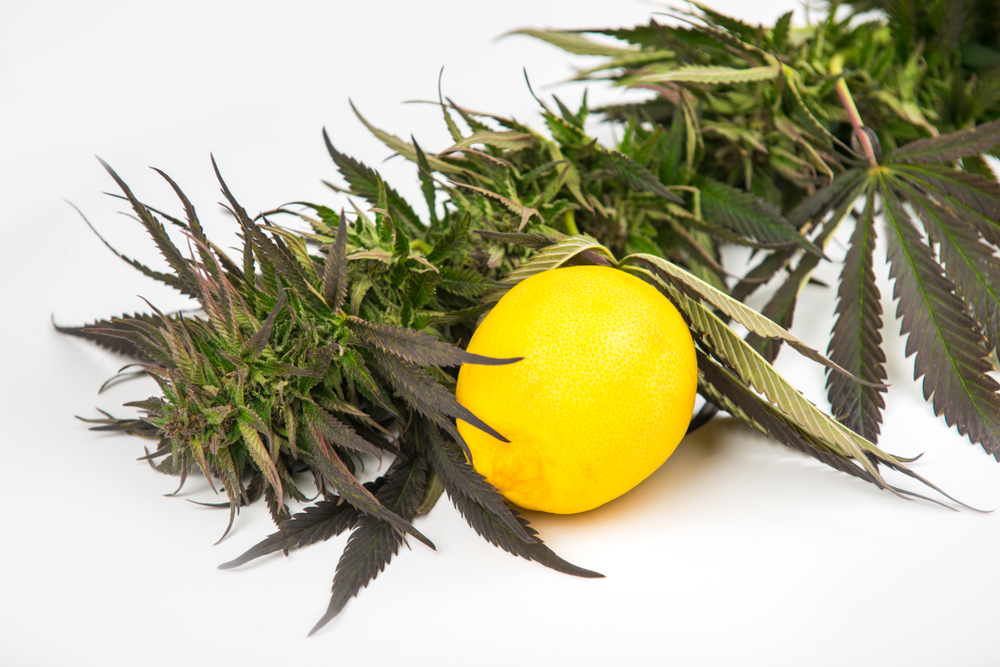
By Eric Sklar, CEO and Co-founder of Napa Valley Fumé
I’m a serial entrepreneur and my roots in Napa Valley run deep. I’ve been a cultivator in this beautiful terroir for over 40 years, initially as a wine guy from a family of growers and makers, and now as the Co-Founder and CEO of a premium seed-to-sale cannabis company. I see a lot of similarities between wine and cannabis, comparisons that paint a bright, accessible, and profitable future for our industry.
Wine + Cannabis Offer Interesting Comparisons
Both are agricultural products that are highly regulated, though cannabis far more so given the industry is still in its infancy. 40 years ago, when my family started in the wine business they experienced similar business challenges, or as I like to call them – opportunities.
Like wine, cannabis comes in a variety of strains and formats. Also, like wine, cannabis is extremely well suited to the growing conditions of California’s terroirs, especially those where I live in Northern California. If you think about the wide variety of wine varietals – Cabernet, Pinot, Sauvignon Blanc, Rieslings, and so on – there is an even greater variety of cannabis strains – Lemon Sour Diesel, Double Chem OG, Budzilla, Bogota Berry, etc. There is something for every palette, which pre-legalization, I am not sure many people really paid attention to. This is all to say, that just as there are many different ways to enjoy wine depending on your tastes, your budget, or your intentions and preferences, the same is true for cannabis.
There’s so much more. If you’ve ever had a great wine or even a decent wine, you know that there are all these flavors and aromas that layer on each other and evolve over time, interacting in different ways to create this wonderful sensory experience that’s both about taste and smell. The same goes for cannabis. Premium cannabis is as complex as the most complex wine. Both wine and cannabis contain terpenes and it’s the variety of different terpenes in each of them that determines the flavors, aromas, and overall experience. Coming from wine, this is something I understand and I think as people explore cannabis without the stigma of prohibition, they will begin to seek out terpene-rich strains, just as they now seek out complex wine profiles – perhaps unknowingly given how wine is such a normalized product in today’s society.
Of course, there are obvious differences between cannabis and wine. The plants themselves are very different. One’s an annual plant and one’s a perennial vine. But, they both produce very similar compounds that make the sensory experience of their flower and fruit so much richer.
Let’s Talk Terpenes
You’ve probably been hearing a lot more about terpenes lately. They’re kinda the new ‘it’ thing in our industry. Terpenes are organic compounds in plants responsible for the unique smells and tastes of your favorite plants, flowers, and fruits. Most people don’t know this but with both wine and cannabis, most of what you think you’re tasting is actually what you’re smelling. It’s these terpenes that give your favorite wines and cannabis strains their signature scents.
Some of them overlap — there are some of the same terpenes in both cannabis and wine grapes like limonene and myrcene. And then there are some terpenes that are more unique to one plant or the other. But it’s the same compounds and so coming out of wine, it was such a natural thing for me to say, I’m not in this to build the strongest, highest-THC-get-you-wasted product. I wanted to develop something that honored the terroirs I’ve come to know and love. A premium product offering, with the same wonderful components of the wines I’ve been creating and the same rich variety of flavor profiles as the grapes I’ve been growing for all these years.
As chemicals go, terpenes offer delicate but very distinctive aromas but they are volatile and, if you’re not careful, will disappear quite quickly. You have to work to maintain them to keep them from evaporating from your flower as from your wine. Taking the time and care to capture and preserve these aromas and flavors that are truly unique to each strain and varietal makes for a much richer experience than the extreme high that some people chase, the cannabis equivalent of Night Train. With cannabis, quickly harvesting the flower and getting it into a temperature and humidity-controlled drying room helps maintain these volatile compounds as does the way you cure and store the flower after the initial drying. In wine, we preserve the terpenes with careful barreling and bottling.
The best way to enjoy terpenes is to use a flower vaporizer. Just heating it up enough to release everything without burning it and without burning rolling paper that covers up the subtle aromas of the terpenes.
Outdoor Growing Enriches the Final Product
The cannabis plant has been growing outside for millennia and our hypothesis at Napa Valley Fumé is that growing outdoors creates a wider range of terpenes and a richer, more nuanced consumption experience. A plant, like a human being, is a holistic entity, it’s a being of a sort. If you took a person — like in The Truman Show — and never let them outside, what would that do to that being?
In truth, we don’t really know what indoor growing does to the plant. But what I think is that these plants are meant to be grown outside. That’s where they do their best. They have to contend with elements that make them stronger, and other factors like pests, which over time create resistance, again making them stronger. They are also receiving full-spectrum sunlight that changes each day of the year. As the year goes on, the color spectrum starts to vary. It is bluer in the spring and redder in the fall. So while I get the efficiency of indoor growing, I believe that all of these environmental elements together with the heating during the day and cooling at night and the fact that different growing regions have different climates and terroirs, you get the best, most interesting plants when you grow outdoors.
Terroir: As Important to Cannabis as They are to Wine Grapes
Terroir is a great word because it’s not just about one element, it’s about everything in a given place. The altitude, the soil, the mineral content of the water, the directional exposure to the sun. In Napa where we’re based, the terroir is affected by the fog that comes up from the Bay. We measure the temperature days over the course of the whole growing season, assessing the total heat that the plant received. All of these things contribute to the terroir and the terroir informs and enriches the sensory experience of the resulting fruit and flower.
Plants, whether you’re talking about grapes or cannabis, will perform differently in different terroirs and will express themselves in different, nuanced ways. For me, this suggests a bright future for sun-grown cannabis with a wide variety of strains each displaying the unique signature of their terroir. The same seed grown across different terroirs expresses really differently, resulting in a distinct profile in the flower and an enhanced consumption experience.
Bottom Line: Terpenes, Terroirs, and Outdoor Growing Paint a Bright Future
This plant has so much to offer and is so expressive. While there’s a place for both indoor and outdoor, it seems to me that the most expressive form of this plant, with the most interesting aromas and flavors, comes when you grow in the full spectrum of sunlight outdoors. To attain the same rich variety in your cannabis experience as you do with wine, you want to do it outdoors, you want to tend them for the greatest terpene expression, you want to pick your strains at the beginning for that. Optimizing for terpenes doesn’t just have a flavor effect, it also shapes the psychoactive effect of the flower. The right terpenes and compounds can make the resulting high sleepier or more energetic, as well as providing other health benefits that are currently supported by anecdotal evidence and will likely be born out in the research that is currently underway.
As with the trajectory of the wine industry, we believe that educating consumers about terpenes and terroirs and offering them a wider variety of products and consumption experiences, will expand the category, creating a bright future for all of us. I’m excited and encouraged by articles like this one from Wine Magazine that suggest that we’re on to something.
 Eric Sklar is an entrepreneur, Napa Valley vineyard owner and public official. He and his family have been growing grapes in Napa Valley for 40 years and he planted his first licensed cannabis garden in 2018. Eric is the CEO and co-founder of Napa Valley Fumé, LLC, a cannabis management and branding company that has launched brands such as LAKE GRADE with a few others in the works. He is also the co-founder of the Napa Valley Cannabis Association and the President of California Fish and Game Commission, a position he has held since 2016.
Eric Sklar is an entrepreneur, Napa Valley vineyard owner and public official. He and his family have been growing grapes in Napa Valley for 40 years and he planted his first licensed cannabis garden in 2018. Eric is the CEO and co-founder of Napa Valley Fumé, LLC, a cannabis management and branding company that has launched brands such as LAKE GRADE with a few others in the works. He is also the co-founder of the Napa Valley Cannabis Association and the President of California Fish and Game Commission, a position he has held since 2016.
In 2005, Eric founded Alpha Omega Winery in Rutherford, CA and was managing partner until 2013. He’s held positions on the Board of the Napa Valley Vintners, as well as Napa Valley Vintners’ Community and Industry Issues Committee. In 1989, he founded Burrito Brothers’ Inc., a restaurant chain based in Washington, DC, which he sold in 1999. Eric was also an adjunct professor at Georgetown University’s School of Business where he taught courses in entrepreneurship, business strategy and marketing. He has held several other political positions including Assistant Press Secretary to Vice Presidential candidate Geraldine Ferraro in 1984.
Eric received a Bachelor of Arts degree in Political Science at the University of California at Berkeley in 1984, a Diploma in Business Studies at the London School of Economics in 1986, and a Master of Business Administration at Georgetown University in Washington, D.C. in 1997.
Member Blog: Is 2021 the Year that Brings Normalcy to Cannabis?

by Jimmy Young, founder of Pro Cannabis Media
Thanks to Democracy and the grassroots efforts of cannabis advocates from coast to coast, there are now 15 holes in the cannabis prohibition wall (legal states), and 36 cracks (medicinal programs). So when will that wall come down and how fast? More importantly, what will the industry look like when the dust settles?
Over the past few weeks, cannabis media pundits from all over the world have chimed in with their predictions for 2021. (Some even pontificated before knowing the results of the Georgia State runoffs in the Senate.)
With President Joe Biden now in the White House and the Democrats controlling both houses of Congress, cannabis advocates are wondering when, and if, we will see federal legalization of cannabis in 2021. Will it succeed or will our dutifully elected politicians do something that will derail the will of the people during this Green Wave of reform?
Already, a Republican congressman from Florida, Greg Steube, decided to file the first draft of reform to a committee that will move cannabis from schedule 1 to schedule 3 on the Department of Justice list of “controlled substances.”
But for many, this does not go far enough. I recently interviewed the Media Relations Director of NCIA, Morgan Fox, who told me, “It’s not something the NCIA or other Cannabis advocacy groups is going to support….we are all focused on de-scheduling, (this draft) it just doesn’t go far enough.”
So what position are lobbyists in Washington, D.C. taking now that their arguments for reform may find a more supportive group to talk to? What is the best thing for the industry? What’s the right thing to do?
I also interviewed Michael Correia, the Director of Government Relations for NCIA, who explained that the target should be for full legalization, but that at the heart of the issue, there is something more important that needs to be dealt with – racism. In my interview with him, he said, “…let’s just stop arresting people for this. Stop arresting people in this war on drugs so no one’s lives are ruined because they’re consuming a natural plant, that 30 plus states have said, Hey, we’re okay with this. There shouldn’t be these differences. So just stopping, arresting these people, and then worrying about what’s the next step?”
Why does he feel so strongly about this? The evidence is overwhelming that law enforcement has used simple possession as a profiling tool to fill our privately run prisons with black and brown people over mere cannabis possession. “The vast majority of these arrests (92%) were for simple possession of the drug. 500,395 of [the 545,602] arrested for cannabis [crimes] were simply found [to be] in possession of cannabis.”
So are you convinced now that cannabis, a plant, is not illegal because it is considered a drug, but rather because of a racist system and the fact it can be used as a means to profile and jail black and brown people? Do you want more evidence of the racial bias in cannabis arrests? Check out this 2020 report on the racial makeup of those simple possession “crimes.”
“A recent report from the ACLU looked at data from 2018 and found that black people were 3.6 times more likely to be arrested for cannabis possession than white people.
This is despite both groups use cannabis at similar rates.
Even in western states with recreational cannabis laws, black people were 1.5-1.8% more likely to be arrested for having cannabis.” Emily Earlenbaugh, Forbes
So what’s the 2021 plan for lobbyists, policymakers, and elected officials? What exactly does this industry look like if one of the following changes happens in the next year or two?
- Cole Memo reinstated
- SAFE Banking
- Rescheduling
- De-scheduling
- The MORE Act
- Science and Research Grants
Each one of those changes is not only positive for this young industry but will have a ripple effect that will impact other industries. The trickle-down effect for any of these changes being implemented will impact the private prison system, banking, and financial markets, big alcohol, big pharma, social equity, expungement of past convictions, interstate commerce, and the international markets.
The cannabis lobbyists know that with Democrats in charge of the direction of the Congress over the next two years, this is their opportunity for serious reform. After all, the House passed a legalization bill, the MORE Act, in December of 2020. In 2019, the previous year, the SAFE Banking Act was also approved by the House, but neither even got to the floor of the Senate because of the then-Majority Leader Mitch McConnell’s anti-marijuana stance.
2021 is now upon us, and “grown-ups are now back in charge in D.C.” However, many advocates I’ve talked with are understandably wary and skeptical about the Federal Government dictating governance of this industry if cannabis is federally legalized and falls under the control of the alcohol and Beverage Commission.
Most cannabis advocates can at least agree that cannabis should be removed from the schedule that was created by the Controlled Substances Act in 1971. This change alone would allow banks to do business with the cannabis industry and allow for the removal of the restrictive 280E tax code that has limited the profit margins of already existing businesses.
Here are some links to other predictions from leading media sources about what cannabis reform democratic control of Congress may lead to:
Marijuana Moment: What The New Democratic-Controlled Senate Means For Federal Marijuana Legalization In 2021
Politico: Democratic-led Senate could clear a path to marijuana legalization
Forbes: Democrats Win The Senate: The Impact On Marijuana Policy
So after reading all this information, here’s what I think will happen over the next four years.
First Year: Cannabis gets removed from the Controlled Substances Act schedule
Second Year: Decriminalization and expungement of cannabis possession crimes with banking reform
Third Year: Interstate commerce
Fourth Year: Full Federal legalization, international export markets open
It’s 2021, the year of the cannabis plant as a political issue is here and reform is as pungent as the odor of this amazing plant. Stay tuned, this will be an ongoing theme in D.C. politics this year as we all hopefully witness another chapter in the historic end to prohibition.
 Jimmy Young is the founder of Pro Cannabis Media. An Emmy Award-winning talk show host from New England, and a resident of Massachusetts who holds a medical card after 4 major surgeries in 22 years.
Jimmy Young is the founder of Pro Cannabis Media. An Emmy Award-winning talk show host from New England, and a resident of Massachusetts who holds a medical card after 4 major surgeries in 22 years.
The founder of Pro Cannabis Media is the current host of In The Weeds with Jimmy Young, a weekly podcast distributed over the CLNSMedia.com, site, iTunes, Spotify, Googlecast among others. In July of 2019, he teamed up with the founder of Cannabis.net, Curt Dalton, to host a two hour live monthly Weed Talk Show where the two Massachusetts natives have interviewed some of the biggest names in Cannabis, like Steve DeAngelo, Bruce Linton, and Tommy Chong. Locally local cannabis advocates and representatives from the medical establishment in the Bay State have all appeared on that show that is now being distributed nationwide. Young also produces a weekly news video, called News Dabs, highlighting and commenting on the biggest stories around the world in the emerging cannabis universe.
Committee Blog: Trust In Cannabis – Why It Matters More Now Than Ever

by Tara Coomans, CEO of Avaans Public Relations
Member of NCIA’s Marketing and Advertising Committee
 As a country, the U.S. is experiencing what can best be described as the “age of distrust.” While public distrust in institutions has been escalating for at least a decade, according to the annual Edelman Trust Barometer which has tracked trust in media, governments, businesses, and nonprofits since 2000. Social unrest and a global pandemic have escalated this distrust. Never has the public eyed institutions or businesses with such suspicion.
As a country, the U.S. is experiencing what can best be described as the “age of distrust.” While public distrust in institutions has been escalating for at least a decade, according to the annual Edelman Trust Barometer which has tracked trust in media, governments, businesses, and nonprofits since 2000. Social unrest and a global pandemic have escalated this distrust. Never has the public eyed institutions or businesses with such suspicion.
Meanwhile, in our industry, the vaping crisis of summer 2019 hit our industry below the belt, aided by some bad actors knowingly flooding the illicit market with products that couldn’t meet stringent state testing. That crisis created a crisis of confidence in the overall cannabis industry-leading it into a bleak period which was only partially buoyed by the declaration that dispensaries were considered “essential businesses” during the COVID-19 pandemic, pro-cannabis outcomes in both voting booths and Congress, many thanks to NCIA’s national and local efforts. By supporting NCIA, you’re signaling industry commitment and that you value growing trust within the industry.
Now, against the national backdrop of distrust and a COVID-19 vaccine that offers a glimmer of hope, it’s time to evaluate ourselves and our industry’s actions. Never has it been more crucial for all brands, but particularly our industry, to lean into actions and communications which consistently and powerfully earn the trust of investors and consumers. As an industry, we’re on an important precipice, what we do next will either ensure our credibility or tarnish it for years to come.
Consumers (and therefore investors) are looking at brands in a more holistic manner. Trust will be the single most valuable brand attribute.
Trust is defined on two spectrums: competence and ethics.
For CEOs, CMO’s, and experts in our industry, the time is now to act and communicate from a place of authentically aligned communications. This alignment will require hyper levels of empathy and a constant pulse on the state of affairs affecting your customers. Consumer behavior is in flux now.
The COVID-19 pandemic has changed consumers and now is the time for brands to align. According to the Edelman Barometer special report, Brands Amidst Crisis:
- The role of brands in reflecting the consumer’s desire to be viewed as a tastemaker or trendsetter has decreased 9%
- Up 38% is spending time with family
- 86% of consumers expect brands to solve both societal and personal problems, including proper treatment of employees and making product in a domestic market
- The only values more important than trust to consumers are price and quality
Because consumer behavior is in flux, it’s never been more important to ensure internal and external values and communications align. Ironically, ensuring alignment supports the flexibility needed to respond quickly to changing behaviors or unexpected upheaval.
Aligned communications means we act internally and externally in a consistent and emotionally intelligent manner that earns trust. It’s not just good for our industry, trust in brands has very real bottom-line implications including increased sales, increased investor opportunities, and reduced customer acquisition costs. In fact, according to Edelman Trust Barometer, high trust consumers have 75% more brand loyalty.
Outstanding packaging and even quality products are the minimum expectations for today’s brands. But even those choices come under scrutiny from consumers if they don’t mirror consumer expectations and lifestyle. Therefore, earning trust starts at the very beginning. The earliest choices are powerful signals to consumers about brand values.
It isn’t enough to simply sponsor a campaign or align with a social movement. While those choices can be powerful quivers in your trust arsenal, it feels and sounds hollow when the brand is suddenly thrusting itself into a conversation without looking at itself first. Consumers are increasingly aware of “trust washing.”
92% of employees expect their employer’s CEO to speak up for issues ranging from income inequality to diversity and training for future jobs. An aligned trust-based strategy starts on the inside. Take a solid look at the ethos and ethics within your own company.
What are your company’s values?
What do you stand for?
How do you signal trust internally and how do you reward it?
Does your internal communication stand for your values?
The reason this internal step is critical is no matter what, your brand ethos is distilled into consumer interactions and communication, whether those communications are with dispensary workers or directly to the consumer, the experience will always stay with the brand. Imagine a dispensary worker making recommendations to a new-to-cannabis buyer, naturally, the dispensary worker has a huge amount of influence on the consumer’s impression of a new brand. And new-to-cannabis buyers are most likely to be loyal to their first brand, assuming the product meets expectations.
Personal experience is the number one way to build trust with consumers. 59% of customers say personal experience matters the most.
What consumer interactions signal trust?
How do you manage poor reviews?
How do you handle customer inquiries?
How does your owned media reflect not only your brand values but those of your customers?
Personal experience is absolutely about product experience and brand interactions. Brand interactions at events will take on more importance in cannabis. Consumers will want to engage in an experiential way with cannabis brands and it won’t be at cannabis events exclusively, consumers will expect to see cannabis brands in all the same places they see alcohol brands, even if sales and sampling aren’t available, which means experiences will need to be multi-sensory and strongly personal. Choose your experiences carefully based on your brand audience and ethos.
Earned media is second only to personal experience incredible trust-building. During the COVID-19 pandemic, trust in publications increased by 7%. Brands should look for opportunities in earned media that reflect their values. Branded content is another area where brands can use the credibility of publications.
Experts are still considered credible sources (52%) and they far surpass celebrities (35%) and influencers (36%). As you consider brand strategies in 2021, take a careful look at who you’re leveraging and what role they play. Choose your experts carefully and ensure they are fully vetted. NCIA’s Marketing and Advertising Committee is developing an “experts directory” of carefully vetted industry professionals, this will be a key resource not only to event organizers, but CEOs and CMOs looking for credible, authentic experts.
Our industry has so much to offer consumers, we provide very real opportunities for consumers to enhance their lives. We have been active on numerous social justice fronts from the very beginning. We may come from a historical place of rebellion, but often, even that rebellion came from a place of empathy and not just income. Consumers today are responding to companies who double down on trust and an aligned brand value system. There’s every reason to think the cannabis industry can do this better than anyone. Together, let’s lean into our values and seed trust not just in our companies, but in our industry.
*All statistics come from Edelman Trust Barometer 2020, unless otherwise noted.
 Tara Coomans is the CEO of Avaans Media (formerly known as Primo PR), which has been working with hemp and THC brands and services since 2015 from startup through IPO. Founded in 2008, Avaans Media brings a digitally forward and purpose-driven perspective to public relations. Avaans Media is based in Los Angeles with clients and team members distributed around the country including Washington D.C., New York and Denver.
Tara Coomans is the CEO of Avaans Media (formerly known as Primo PR), which has been working with hemp and THC brands and services since 2015 from startup through IPO. Founded in 2008, Avaans Media brings a digitally forward and purpose-driven perspective to public relations. Avaans Media is based in Los Angeles with clients and team members distributed around the country including Washington D.C., New York and Denver.
Coomans is on NCIA’s Marketing & Advertising (MAC) committee and leads the MAC Experts Directory subcommittee for 2021. Coomans is a frequent writer and speaker on public relations, marketing, and social media topics.
Member Blog: A Less Than Subtle Hint

By Kary Radestock, Hippo Premium Packaging
Valentine’s Day is coming. To some, it will be a wonderful day filled with candy and gifts and expressions of devotion. To others, it feels like an obligation designed to enrich greeting card companies, jewelry stores, and florists.
Whichever side of the fence you fall on, the fact is, this is one of the most important periods for retailers. According to the National Retail Federation, Valentine’s Day spending in 2020 totaled about $27.4 billion.
And with all this spending, brands really matter.
For instance, who wouldn’t want to get a silver or white gold necklace from Tiffany? Truthfully, it’s not that different from other necklaces on the market that are just a fraction of the price, but those don’t come with the Tiffany name and that iconic powder blue rigid box packaging.
The Unboxing Makes It Special
Beautiful packaging provides the foundation for companies to build a luxury brand and command higher prices in the marketplace. It’s how Harry and David can charge $40 for the box of 9 pears I received for the holidays.
I know their fruit is top of the line quality, but I just checked and I can get pears for about a buck each at my local Whole Foods. That’s more than just a bit of a difference!
What makes the price palatable and the product premium is the packaging.
Steve Jobs knew this and insisted that Apple products were always creatively packaged. “Packaging can be theater,” he said. “It can create a story.”
A beautiful package leaves a lasting impression. When a consumer has a hard time throwing away the box a gift came in, it’s a sign your brand is on the right track. How many of you kept the box your iPhone came in? I know I did and probably still have it.
Whether it is the precise fit of Apple’s packaging that makes you wonder how all those items fit so perfectly inside, or the fresh-off-the-farm feeling you get when opening a gift from Harry and David, luxury brands rely on premium packaging to help convey the idea that they are truly special and worth the higher price.
Cannabis Love
While Valentine’s Day isn’t as big a holiday in the cannabis world as 420, it does generate an impressive boost in sales.
Point-of-sale data from the cannabis software firm Flowhub and analytics company Headset found that Valentine’s Day spending increased among recreational consumers with sales jumping 20-32 percent over a typical day. Infused “mocktails” had the largest jump with sales rising 596 percent above normal.
Bath products and salts increased by 186 percent. Massage oil and lubricant sales rose by 88 percent.
Infused chocolates increased 33% and infused gummies rose 43%.
And the single most important factor in purchasing decisions, whether in the mainstream or the cannabis sector, is branding.
An article in Civilized said that cannabis products can be made exceptional and more valuable by communicating their distinctive properties through the branding process.
“Branding in the cannabis industry is what makes an agricultural product and the business that refines the plant more distinctive,” the article stated. “Branding creates an emotional connection, and when done effectively, branding can prevent products or services from failing.”
And with limited options to build a cannabis brand through traditional media, the packaging becomes even more vital to the product’s success.
The importance of packaging cannot be overstated. It is one of the strongest factors that influence a purchasing decision. It provides the first impression of the product to the consumer and it is the last thing they see before making their selection.
Not only can good quality packaging grab a consumer’s attention, but it can also communicate a brand’s messaging and convey key competitive differences. Conversely, some otherwise excellent products fail due to inferior packaging.
Therefore, it is vital that packaging is carefully designed so that it builds the brand, stimulates sales, conveys key messaging, and generates consumer loyalty.
So, this Valentine’s Day, whether you celebrate with cannabis or candy or not at all, remember that brands matter. People want gifts from the brands they know, trust, and aspire to own.
Personally, I am hoping to luxuriate in a tub filled with infused bath salts while opening a special little blue box (Jon, are you listening?).
Happy Valentine’s Day!
 Kary Radestock, CEO, launched Hippo Premium Packaging in March 2016 offering an array of services to the cannabis market, including: Marketing Strategy, Brand Development, Social Media, Public Relations, Graphic and Web Design, and of course, Printing and Packaging. Radestock brings over 20 years of award-winning print and packaging expertise, and leads a team of the nation’s top brand builders, marketers and print production experts. Hippo works with businesses looking for a brand refresh or an entire brand development, and specializes in helping canna-business get their products to market in the most beautiful and affordable way possible. Radestock’s Creative Collective of talent and experts, allows her to offer world-class solutions to support the unique needs of the Cannabis Industry.
Kary Radestock, CEO, launched Hippo Premium Packaging in March 2016 offering an array of services to the cannabis market, including: Marketing Strategy, Brand Development, Social Media, Public Relations, Graphic and Web Design, and of course, Printing and Packaging. Radestock brings over 20 years of award-winning print and packaging expertise, and leads a team of the nation’s top brand builders, marketers and print production experts. Hippo works with businesses looking for a brand refresh or an entire brand development, and specializes in helping canna-business get their products to market in the most beautiful and affordable way possible. Radestock’s Creative Collective of talent and experts, allows her to offer world-class solutions to support the unique needs of the Cannabis Industry.
Committee Blog: The Language Of the Cannabis Industry – Developing A Commercial Manufacturing Glossary

By NCIA’s Cannabis Manufacturing Committee
The language of the cannabis industry is crude. It’s not that the cannabis industry relies on vulgar or offensive words, but rather that modern cannabis vernacular remains raw, unrefined, incomplete, and sometimes contradictory, even in mature markets. Perhaps most generously described as “imprecise” or “fluid,” the current lexicon is changing as quickly as the industry, but not always for the better. Consistent and universal terminology are hallmarks of strong industries. As the cannabis industry (including both high-THC “marijuana” and low-THC “hemp”) continues to grow and prove its legitimacy, it is critical that everyone is speaking the same vocabulary.
Defining the issue
Out of necessity, the language of the cannabis industry took root in the dark. Decades of prohibition followed by state-led regulation has resulted in a fractured vocabulary where terms-of-commerce have fuzzy boundaries. The current landscape of murky terminology can inject ambiguity into everyday transactions and, in the worst of circumstances, mislead consumers. As some industry terms coalesce in particular regions, for example, other terms take on different meanings around the country. It is not a problem unique to the cannabis industry, but with its regulatory history, rapid product advancements, and diverse consumer base, the NCIA’s Cannabis Manufacturing Committee (“CMC”) felt it time to start a conversation about the words that define the industry.
With legalization comes a mass-consumer base and new forums to joust for consumer attention. Retail shelves, product packaging, and commercial advertising are the new arenas where cannabis companies try to describe their product to consumers and differentiate their brands from others. Out of this scrum comes a new marketing jargon that can be difficult to decipher. Shatter, crumble, butter, wax, sauce, diamonds, distillate, isolate, broad-spectrum, full-spectrum, partial-spectrum… and that is just in one section of the dispensary. Indeed, a huge swath of cannabis consumers fall into the infrequent or casual consumer demographics for which these terms mean next to nothing.
What’s the problem?
This linguistic haze is felt acutely in the manufacturing link of the supply chain. Manufacturing is the relatively nascent segment of the industry that converts raw cannabis plants into various medical, adult-use, and industrial products. In just the past two decades, new technologies have produced a glut of new products, each of which needs to be called something. But those new terms have ambiguous definitions that are easy vehicles for confusion. And where confusion is prevalent, both consumers and companies suffer.
For many cannabis customers, trying to decode a dispensary menu is like reading in an alien language. They frequently must rely on budtenders and marketing materials to understand some products’ basic characteristics. And even if they manage to become fluent in one dispensary’s menu, they may still find it difficult to predict how that menu will translate to other retailers across the country. The lack of vocabulary standardization would be untenable in the food or beverage industries. In the cannabis industry, where patients may rely on specific products for medical treatment, consumers should have a uniform vocabulary to describe products.
That challenge is not limited to retail consumers. Language is critical to the smooth functioning of intra-industry business relationships. As in any other industry, cannabis business relationships are far more successful when the parties’ expectations are aligned. When a dispensary orders tens of thousands of dollars in shatter, crumble, distillate, and tincture, they have certain expectations about the products they will receive. Even experienced extractors, operators, and executives have different understandings of where some products end and others begin.
Ambiguity in the commercial arena can lead to big problems. Among the best-case scenarios, a miscommunication results in a dissatisfied customer. More serious disagreements may require costly replacement shipments or refused deliveries. Of course, if the stakes are high enough and both parties are adamant in their positions, a linguistic quarrel may become a courtroom duel. Some advertising litigation, such as for “Refined Live Resin” vape cartridges, is already working its way through the court system. When it comes to cannabis terminology, fuzzy boundaries are not a standard the industry should embrace. But leaving cannabis industry terminology to the mercy of courts and regulators also holds little appeal.
And so…
…the CMC set out to create a working glossary. The goal of this document is to get the industry on the same page with published terminology standards as best understood by the NCIA’s Cannabis Manufacturing Committee. These standards are intended to facilitate commerce within the cannabis industry by increasing consistency and decreasing confusion.
The CMC developed a list of the most common terms that are currently utilized in the manufacturing segment. While the committee included some broad terms applicable to the industry at large, the focus was on those terms that most directly relate to cannabis extraction and refinement. From that list of industry terms, the committee drafted definitions that attempt to capture how those terms are currently being used throughout the legal cannabis industries. The CMC then shared those draft definitions with as many practitioners as it could to get a broad selection of perspectives. Wherever possible, the CMC sought to be inclusive of regional variations and note instances where terms are exceptions to a generally understood meaning. But the CMC understands that neither this process nor any other is guaranteed to represent all corners of an increasingly complex industry.
The document is not meant to be the ultimate word on cannabis terminology, but rather a snapshot in time and the starting page for a discussion about what the words of the cannabis industry should mean. Importantly, these definitions are the CMC’s attempt to capture how the terms are currently used, not how they should be used. Indeed, there are several well-qualified bodies debating the future of cannabis nomenclature, including ASTM’s D37 committee and the Emerald Conference.
Along with publication of this glossary, the NCIA’s Cannabis Manufacturing Committee is inviting comments from the entire cannabis community. Your constructive comments are a crucial part of forming the vocabulary of an industry. The CMC’s intent is to revisit these definitions approximately every calendar quarter, adding, revising, and annotating as new terms are invented and meanings inevitably shift.
So, without further ado…
Paul Coble is the founder and CEO of Thalo Technologies, a veteran intellectual property attorney, Vice-chair of the NCIA’s Cannabis Manufacturing Committee, and Chair of the Nomenclature Subcommittee.
The CMC focuses on reviewing existing business practices and state regulations of concentrates, topicals, vaporizers, and edibles, ensuring the manufacturing sector is helping shape its destiny.
Member Blog: 6 Human Resource Tips For Your Cannabis Company

by Jacob Carlson, Co-founder and CEO of EZHire
The cannabis industry has been growing exponentially over the last few years and plenty of job opportunities are coming with it. As businesses grow, they need to increase staff… and that takes time and money.
Not only do companies have to find and interview clients, because of all the legal matters tied to the industry, they also have to run background checks. The onboarding process and paperwork is another important matter to be dealt with.
Cannabis businesses must stay on the right side of the law by making sure their hiring process is done correctly, and that’s where human resources comes in. Here are some human resource tips you should be aware of when you are hiring to meet your company’s needs.
Considering Partnering with an HR Company
If you don’t have an HR department, hiring one comes with its own set of complications. Instead of bringing on yet more employees, considering partnering with an HR company that offers these services.
There are many HR companies that specialize in working with cannabis companies. They are familiar with all the legal requirements and they will make sure that all your I’s are dotted and your T’s are crossed. They also have advanced software to ensure processes are as efficient as possible.
Know About Upcoming Changes in Federal Banking and Payroll
For years, the legal gray areas associated with cannabis companies kept them from having access to federal banks, mortgaging and financing. Now federal policymakers are coming closer to passing legislation to give businesses access to federally insured banks. Once that occurs payroll processing will become easier.
It is advisable to partner with an HR company that is aware of what the new legislation will entail so they can make the transition as seamless as possible.
Each Employee Should Know What’s Expected of Them
Every company should communicate with employees so they know exactly what’s expected of them. This is especially important in a cannabis company where there are stricter rules and regulations. If an employee does not follow the proper procedures, the company may have to deal with legal issues.
An employee should be aware of their responsibilities early on. This should be clearly explained in the job description and it should come into play in the training. Additional materials and meetings should be provided if updates are made.
Run Background Checks and Make Sure I-9’s are Filled Out
When an employee is hired, he or she must complete an I-9 Employment Eligibility form. This ensures their identity and ability to work in the United States. It is necessary in every industry. The form must be held on to for a few months and it may be asked for during an audit.
A background check is not always necessary but it’s a good move, especially in the cannabis industry. A clean background check gives you the confidence in knowing your employee will be honest and competent.
Classify Employees Correctly
A cannabis industry typically has a variety of employees that can include part-time, full-time, 1099 contractors, seasonal, interns, and so on. Seasonal jobs are especially common as trimmers and holiday sales reps may not work for the company year-round.
It is important to know how each employee should be classified so you can give them the proper paperwork during the onboarding process.
Here are some steps you should take to ensure you are classifying your employees correctly.
- Know the Difference Between Employees or Independent Contractors: If you are not sure how to tell the difference, there are resources available that can provide you with information.
- Know the Difference Between Exempt and Nonexempt Employees: Exempt employees are entitled to overtime while nonexempt employees are not. Their status depends on the type of work they do and how much they make. Different states handle this differently.
A good HR company will help you classify your company correctly to keep you from incurring penalties.
Encourage Employee Retention
The hiring process takes time and money. In order to avoid hiring new employees, companies should integrate fair practices within the workplace. This includes:
- A Smooth Onboarding Process: Employees should be made to feel welcome during the onboarding process and they should be well trained so they know what’s expected of them.
- Create an Employee Handbook: This will provide additional clarification concerning an employee’s duties and the workforce procedures.
- Pay a Fair Salary: Compensating workers fairly will boost retention.
- Offer Opportunities for Upward Mobility: Workers should be given opportunities for promotion as well as training that can help them advance in their career field.
The cannabis industry is growing in leaps and bounds. If your company is expanding, these tips will ensure that your hiring and payroll processes are above board. Which practices do you enforce to avoid penalties in your cannabis business?
 Jacob Carlson is the Co-Founder and CEO of EzHire Cannabis. EzHire is a talent engagement platform designed for the cannabis industry. Jacob is a serial entrepreneur having previously co-founded a corporate event service (Just Enjoy!) and social media automation tool (RapidCrowd), and he is primed for scaling his next venture with his team of technology veterans.
Jacob Carlson is the Co-Founder and CEO of EzHire Cannabis. EzHire is a talent engagement platform designed for the cannabis industry. Jacob is a serial entrepreneur having previously co-founded a corporate event service (Just Enjoy!) and social media automation tool (RapidCrowd), and he is primed for scaling his next venture with his team of technology veterans.
Hiring in the cannabis industry is hard, EzHire Cannabis makes it easy. We help businesses in the cannabis, CBD and hemp post jobs, review qualified candidates profiles with video interviews and share them among their team. If you are tired of weeding through thousands of unqualified applicants or struggling to find someone with specific experience, we can help
Committee Blog: Future-Proofing Your Business – 2021 Series Premier

 The future is coming and the cannabis (marijuana and hemp) industry is uniquely positioned to offer innovative approaches to best management practices in its manufacturing sector. In 2021, the National Cannabis Industry Association’s Cannabis Manufacturing Committee formed a new group focused on addressing sustainable practices, legal protections, and policy considerations to future-proof your cannabis manufacturing business. The series, Future-Proofing Your Business, will consist of blogs, podcasts, and expert panel discussions focused on providing insight into the coming regulations, processes, facilities, and consumable products.
The future is coming and the cannabis (marijuana and hemp) industry is uniquely positioned to offer innovative approaches to best management practices in its manufacturing sector. In 2021, the National Cannabis Industry Association’s Cannabis Manufacturing Committee formed a new group focused on addressing sustainable practices, legal protections, and policy considerations to future-proof your cannabis manufacturing business. The series, Future-Proofing Your Business, will consist of blogs, podcasts, and expert panel discussions focused on providing insight into the coming regulations, processes, facilities, and consumable products.
Extracts
With the coming vaping emissions and vape product potency regulations, the Future Proofing subcommittee will offer their expertise on what to expect and what manufacturers can do to support compliance and help protect the environment and public health. The outbreak of vaping-related respiratory illness in late 2019 demonstrated the damage a few bad actors can do in a marketplace where regulated and unregulated producers compete for consumer dollars. The committee will discuss these issues and more as manufacturers and regulators work together proactively to protect consumer health.
Processes
Manufacturing processes are evolving as the scientific understanding of cannabis consumables and their various effects and treatments deepens. In their efforts to protect environmental and worker health both inside and outside of the processing area, manufacturing best practices are changing. Regulators are also beginning to determine the standardization of these various processes in an effort to retain product quality without jeopardizing human and environmental health and safety. And new forms of competition will demand an increased focus on protecting intellectual assets. This second part of the Future-Proofing Your Business series will unpack sustainable manufacturing process design including software, equipment, and materials offering recommendations for regulatory approaches.
Facilities
Building on the processes deployed in the future of manufacturing cannabis (marijuana and hemp) products, facilities will also need to consider more efficient design strategies to reduce the use of energy & waste, increase product safety, and safeguard worker and community health. The rapid pace of energy efficiency technologies development for all utilities means most industries, not just cannabis, are playing catch up. Automation is redefining the best practices surrounding product and employee safety. Increasingly stringent testing standards are demanding greater care for waste and community health. The committee will offer their insights into the technologies and practices that are becoming popular in this multi-industry-wide push for sustainability.
Biosynthetic Manufacturing
The final topic to be addressed by the new Future-Proofing subcommittee in their 2021 series, will take a detailed look into the future of manufacturing techniques, specifically the use of biosynthetic manufacturing and how this will impact the industry. Tune in to learn more about bioreactors and their application for the concentrate market and genetic modification to cannabis (marijuana and hemp) consumable products.
Prepare to check out the first part of this integral Future-Proofing Your Business series brought to you by the Cannabis Manufacturing Committee.
Coming, February 2021.
Member Blog: A Whole New World On Zoom – 5 Tips To Look And Sound Like A Pro

by Jimmy Young, founder of Pro Cannabis Media
2020 will be remembered as “unprecedented.” A raging pandemic, a divided country resulting in a contentious election, an economy on the brink, but for cannabis, it was huge. The MORE Act and the SAFE Banking Act pass the U.S. House of Representatives, and the end of prohibition of cannabis is becoming more of a reality than a dream. Throw in five more states using the ballot box to legalize adult use of cannabis, and while 2020 was a nightmare for many, for cannabis, it was monumental. However, for many of you in the now “essential” cannabis industry, there was one development that many in the cannabis industry had to deal with, a fear of being on ZOOM on a daily basis!
Whether you are running educational webinars as part of your marketing efforts to stay in touch with your clientele or creating videos that allow you to control that message to your database. You have probably spent more time on camera over the past 10 months than you ever expected. As humans we are all our own toughest critics when it comes to hearing our voices recorded. (Do I sound like that? I thought I had a good voice. Yuk!)
When it comes to seeing ourselves on camera, we think we all look 10 pounds heavier. Or is it just a bad hair day? Or is the whole world looking at that minuscule zit on my face? The toughest part of getting over a fear of anything is facing it, especially when it’s facing your own image!
The cannabis industry, like so many businesses in the U.S., have had to adapt to a new way of doing business from sales calls externally to communicating with staff internally. The water cooler break for some office politics chit chat, is a thing of the past. Now that our regular commutes have moved from 30 minutes to 3 seconds, working from home has become the norm. That means you better get used to seeing yourself on camera.
So here are a few basic tips for those of you who are regular users of ZOOM, Facetime, Facebook Live, YouTube Live, Stream Yard, Google Hangouts, or WebEx from Cisco.
First some basic lessons about “face-to-face” communication. Eye contact is pretty important, isn’t it? It’s a sign of respect. It’s the single most important connection we can make without touching each other, and since that’s been banned thanks to the “vid,” maintaining eye contact with that little camera is paramount,
When you were younger, did you ever play the staring game? Look into a friend’s eyes. Try to maintain eye contact for as long as you can. Why? When you are on camera, as soon as you avert your eyes, or look at something else, you break your connection with the person you are talking to. This is true whether you are talking on ZOOM or talking to someone face to face.
Tip #1
Make sure your camera is at eye level. Put your device on a shelf, or prop up your laptop on books. In Hollywood, they shoot actors low to high in order to give more of a powerful presence on screen. (Tom Cruise is 5’7” but always appears taller on screen because of this!)
Tip #2
Don’t position your camera with a bright window behind you! That’s called backlighting. Since you are the subject on camera, you should have the most light on you. This is especially true if you have black or brown skin. Get a ring light or a really bright desk lamp and position it behind the camera facing you.
Tip #3
Sound. There are some really good built-in microphones in Apple computers, but even the microphone attached to an external set of earbuds is better than their built-in microphones. High ceilings are a nightmare for sound, empty rooms with no carpet or furniture will make your sound hollow and can create an echo. So find a carpeted room with furniture, and better yet, invest in an external microphone.
Tip #4

The rule of thirds. In any introductory film or graphics course, one of the first things you learn is how to frame your subjects. Each frame in a horizontal 16:9 aspect ratio is divided into 9 cells. Where the vertical and horizontal lines meet is where your focal points should be.
On ZOOM you are the only subject, so sit back in your chair and position the camera so that you fill up 2/3 of the frame with your head and shoulders. The top of your head should be in the middle center cell (2). Your neck and shoulders and arms should be touching 4-5-6 plus 7-8-9.
Tip #5
For those of you who don’t even turn the video on during the ZOOM call: get over it! You are human. You are not a supermodel. People will accept you as long as you can accept yourself.
Now, for those of you who are uncomfortable with their looks and don’t even put your camera on during a ZOOM call, I guarantee that at some point in the morning, you have looked at yourself in a mirror (perhaps even examined the various pores on your face), and after brushing out your bed head hair, you’ve said….OK, good enough, and started your day.
So I ask you if you are your toughest critic, and you’ve already given yourself a passing grade, you should be comfortable enough with how you look on camera.
Remember now that our way of doing business in cannabis has changed, it’s a whole new world of weed and on ZOOM!
 A native of Newton Massachusetts and a 1979 graduate of Tufts University, Jimmy Young has over 40 years of experience in commercial television and radio. A former Emmy Award-winning Talk Show host for his sports talk show for kids on NECN in the 90’s, he is one of the rare professionals in that industry who has had success in front of the camera, in production, and in sales management.
A native of Newton Massachusetts and a 1979 graduate of Tufts University, Jimmy Young has over 40 years of experience in commercial television and radio. A former Emmy Award-winning Talk Show host for his sports talk show for kids on NECN in the 90’s, he is one of the rare professionals in that industry who has had success in front of the camera, in production, and in sales management.
The founder of Pro Cannabis Media is the current host of In The Weeds with Jimmy Young, a weekly podcast distributed over the CLNSMedia.com, site, iTunes, Spotify, Googlecast among others. In July of 2019, he teamed up with the founder of Cannabis.net, Curt Dalton, to host a two hour live monthly Weed Talk Show where the two Massachusetts natives have interviewed some of the biggest names in Cannabis, like Steve DeAngelo, Bruce Linton, and Tommy Chong. Locally local cannabis advocates and representatives from the medical establishment in the Bay State have all appeared on that show that is now being distributed nationwide. Young also produces a weekly news video, called News Dabs, highlighting and commenting on the biggest stories around the world in the emerging cannabis universe.
Member Blog: How to Launch a Marijuana Gift Card Program for Your Dispensary

by Gary Cohen, CEO of Cova Software
Gift cards are an excellent way to increase brand awareness and an opportunity to generate new customers for your dispensary. Research shows that these tiny pieces of plastic can boost revenue by up to 40%. They are indeed invaluable tools for upselling as well, as 75% of recipients tend to overspend on the value stored in their cards. Starting a gift card program requires minimal investment and is a proven tool to stimulate bottom-line revenues and enhance the customer experience.
Benefits of Gift Cards
A well-oiled gift card program has the potential to bring at least two customers into your store — the buyer and the receiver. A study by First Data showed that 11% of gift card receivers noted they had never or rarely visited the merchant location before receiving the gift card, and over a third became regular customers after redeeming the card. Also, if your loyalty program offers gift cards as an incentive, a customer will be encouraged to spend more money when receiving points redeemable for a gift card in the future. These cards don’t just boost your retail profits but also serve as tiny billboards for your brand.
Following are five important points to consider when launching a gift card program for your cannabis retail store:
#1. Choose and Configure the Best Solution
Choosing a gift card program that integrates seamlessly with your existing POS system is the most reliable solution. If your POS does not offer any gift card functionality, consider an upgrade to a more modern cloud-based cannabis POS system. You may also opt for standalone third-party gift cards that can be sold through your POS as SKUs, but this solution is not recommended as there is a risk of data slipping through the cracks.
#2. Create a Gift Card Strategy
Developing a gift card strategy is a crucial step in designing your program. Is your gift card-program meant to cover your bases across major holidays and slower seasons? Or is it supposed to be an all-encompassing component to your loyalty program and upsells? It is necessary to plan and design a program to meet your requirements and customer needs for gift card sales and redemptions at your cannabis dispensary. Also, choosing customizable branded gift cards will allow you to have total control over the look, logo, and design.
#3. Stay Compliant with Regulations
Cannabis is a highly regulated industry, and retail gift cards must fall in line with specific marketing and advertising restrictions. However, with an easy to manage, activate and track gift program that ensures end-to-end compliance as per local regulations, you can sell more gift cards and add to your revenues without the risk of any legal ramifications.
#4. Plan Gift Cards Orders and Sales
Your supply of gift cards must meet demand, and you must never run low on its inventory. Estimate demand based on your sales volume, holiday season, and target demographics, and plan your order accordingly. Placing gift cards at the payment counter is a great way to capitalize on impulse purchases. Train your staff to recommend gift cards to customers when appropriate, and establish incentives for them to sell the most cards.
#5. Promote, Track, and Report
Marketing online and organizing giveaways on social media are excellent tactics to build brand awareness. Capitalizing on holiday season sales and occasions that focus on gift-giving will further propel your cannabis gift card sales. You must also track, measure, and report your program’s results regularly against other established KPIs for your business. An integrated reporting system provides you with insights easily extracted from data within your POS so that you can focus on making your gift cards program a success.
Gift cards are one of the safest and most convenient ways to improve cash flow without increasing COGS. A branded gift card that is fully-integrated with your POS system is simple to set up, easy to manage, flexible, and affordable. However, just implementing a gift card program is not enough, and you must have a robust marketing and sales strategy for your gift cards as well. With the complexity that comes with shopping for cannabis products, your marketing campaigns must enhance brand visibility and be able to communicate to customers that the best gift they can give is the gift of choice.
Download your free copy of the Ultimate Guide to GIFT CARDS for Cannabis Businesses by COVA, which is a comprehensive guide to the best ways to use gift cards in the cannabis industry, with detailed information on how to scale and sustain retail growth through a gift card program.
Gary Cohen is the CEO of Cova Software, the fastest growing technology brand in the cannabis industry. Cohen’s focus has been driving the company’s overall strategy, including its vision, go-to-market plan, and strategic development. Since joining the cannabis industry in 2016 and launching Cova commercially in 4q17, Cohen has led Cova to dominate the enterprise sector for dispensary Point of Sale, while forging client relationships with hundreds of single-store retailers across North America.
In solutioning the POS platform, Cohen & the Cova team have met with over 1,900 operators and leveraged expert knowledge to provide retailers the support they need to get a license, pass inspection, launch a store, and improve operations. Cohen leads seminars on retail technology, compliance, business operations, and cannabis banking laws at the industry’s largest events, including the NCIA and MJBizCon. As Cova has become the predominate thought leader for cannabis retail tech, Cohen has established himself as a leading voice educating cannabis entrepreneurs as they build their own successful brands.
Member Blog: Hemp Production, Testing, and the FDA

by Charlotte Peyton, Independent Consultant, EAS Consulting Group
The new U.S. Domestic Hemp Program will approve cultivation plans issued by states and Indian Tribes and can approve plans submitted by producers that live in a state or Tribe where plans are not already submitted and where hemp production is not forbidden. According to the USDA website, 28 states and Puerto Rico and U.S. Virgin Islands have had their hemp plans approved by the USDA, 11 states have plans under review, 5 states have obtained a license from USDA, 5 are electing to continue under the 2014 Hemp Pilot Program, Colorado is resubmitting their plan, Alaska is drafting their plan, and Idaho is awaiting state legislation. What is surprising is that some of the biggest hemp growing states, such as Montana (44,910 acres), Colorado (20,330 acres) and Kentucky (18,910 acres) do not yet have their plans approved by the USDA. Montana is choosing to operate under the 2014 Hemp Pilot Program, Colorado is resubmitting their plan to USDA and Kentucky’s plan is still under review.
While there has been a rush to plant hemp by farmers eager to cultivate a high-priced crop with enormous demand, there has not been the same rush to set up extraction facilities. This is a critical step for the manufacture of cannabidiol (CBD) raw material. Hemp must be dried properly before extraction or it will rot so cultivating a plant that is susceptible to rot without an assigned material manufacturer (extractor) is risky. The impact of the differences between hemp and typical crop cultivation for farmers and the lack of extraction companies has been disastrous for some farmers. Hemp must be monitored for THC levels as the crop grows because any hemp harvested with an amount of THC over 0.3% must be destroyed. This is completely different from soy or cotton cultivation. And when the cost of clones to plant in a large field is included, the potential loss increases dramatically.
Then there are the Food and Drug Administration (FDA) hemp/CBD product issues. While there has been positive movement towards the legal sale of hemp products on the USDA cultivation side, the FDA has authority over foods and dietary supplements, and the FDA’s position is that the addition of hemp/CBD to a food or dietary supplement is “violative.” There is speculation that dietary supplement FDA rules are imminent but until the FDA makes those rules public, sales of finished product is still illegal.
In a Consumer Update statement revised on November 25, 2019 the FDA clearly stated that “it cannot conclude that CBD is generally recognized as safe (GRAS) among qualified experts for its use in human or animal food.” Numerous warning letters have been issued by FDA to CBD manufacturers for disease claims about their products. Whether sold as dietary supplements, conventional foods, cosmetics, animal food, so of the violative disease claims include pain relief, anti-inflammatory, diabetes, acne, anxiety, depression, and cancer. For example, one Warning Letter issued by FDA on November 22, 2019, cites 45 diseases. FDA has stated that CBD in products sold as dietary supplements does not meet the definition of a dietary ingredient in the Federal Food, Drug, and Cosmetic Act (321(ff)(B)(i)(ii)). This provision clarifies that a dietary ingredient cannot be a substance that has been approved as an active ingredient in a drug. FDA has approved CBD as an active pharmaceutical ingredient in the drug Epidiolex. Although the FDA is only taking enforcement action on companies making products that contain disease claims, once the disease claim is made the FDA will cite other regulatory enforcement issues. Companies not making disease claims have not been targeted for enforcement yet. Several states, including New York and Oregon, are following the FDA’s lead by banning some products containing CBD, mostly infused food.
In addition to these challenges, there have been a series of class-action lawsuits filed against hemp/CBD manufacturers. These are based on the fact that the FDA has stated hemp and CBD is illegal in food and dietary supplements. The lawsuits claim the plaintiffs suffered economic loss because the products were not dietary supplements according to the FDA. The 11th Circuit Court of Appeals is allowing the consumer injury requirement necessary to sustain a complaint to be satisfied by the allegation that an FDA product is “illegal.” This ruling may open the floodgates for more class-action lawsuits.
All testing of hemp must be performed by a laboratory with a Drug Enforcement Agency (DEA) license. This is because hemp that does not meet the less than 0.3% tetrahydrocannabinol (THC) does not fall under the industrial hemp definition and is still under the jurisdiction of the DEA. A list of U.S.-based licensed laboratories is available on the DEA website and also on the USDA website. Pesticide screening is one of the tests dictated for hemp in the US Domestic Hemp Program. Ten pesticides have been approved for use on hemp by the Environmental Protection Agency (EPA). The latter is a notable step since the EPA could not do this before the removal of hemp from The Controlled Substances Act. Nine of the allowed pesticides are biopesticides and one is a conventional pesticide.
Then there is the matter of CBD as either a full-spectrum oil vs. an isolate. Unlike marijuana flower which is a very popular product, hemp flower is very rarely sold at the retail level. Full-spectrum oil is extracted from the plant, and depending on the solvent used, produces an oil with the same, or close to the same, naturally occurring chemicals from the plant. The oil, therefore, includes all the cannabinoids present along with any terpenes, lipids, or other compounds present in the plant. Full-spectrum oil is a botanical extract and is a dark thick oil. Isolate is produced by separating the constituents of the full spectrum oil by molecular weights or boiling points to have very pure chemicals in the 95%+ purity range. CBD isolate is a white crystalline substance and bears the greatest resemblance to synthetic raw material and at its purest form cannot be distinguished as coming from a plant in the dirt or a synthesized chemical. Full-spectrum oil bears the greatest resemblance to a botanical dietary supplement. It remains to be seen what the FDA will allow in the future.
I believe in this industry and I am rooting for the pioneers who have taken all the risk thus far, but am concerned about the lack of understanding over FDA’s authority particularly as this industry aims to transition to a regulated future. Most don’t understand FDA’s purview or don’t think it applies to them or their products. When that day comes, bringing the hemp industry into compliance with federal regulations will be challenging.
Hemp pioneers deserve to benefit from their labor and the risk they have taken. For those hemp product companies that do not think compliance is worth the effort or cost, there are many FDA compliant human food, animal food, dietary supplement, pharmaceutical, or cosmetic companies that are waiting to take your business…
 Charlotte Peyton supports EAS Consulting Group hemp, CBD and hemp clients as well as that of dietary supplement and pharmaceuticals. As an independent consultant she assists with projects ranging from startup through manufacturing and support. Her expertise includes quality, regulatory and management, method development and method validation for FDA regulated drug, dietary supplement, and bioanalytical samples. She has extensive experience in writing validation protocols, reports and SOPs and assists with implementation of stability programs and report writing for finished products.
Charlotte Peyton supports EAS Consulting Group hemp, CBD and hemp clients as well as that of dietary supplement and pharmaceuticals. As an independent consultant she assists with projects ranging from startup through manufacturing and support. Her expertise includes quality, regulatory and management, method development and method validation for FDA regulated drug, dietary supplement, and bioanalytical samples. She has extensive experience in writing validation protocols, reports and SOPs and assists with implementation of stability programs and report writing for finished products.
EAS Consulting Group, a member of the Certified family of companies, is a global leader in regulatory solutions for industries regulated by FDA, USDA, and other federal and state agencies. Our network of over 150 independent advisors and consultants enables EAS to provide comprehensive consulting, training and auditing services, ensuring proactive regulatory compliance for food, dietary supplements, pharmaceuticals, medical devices, cosmetics, tobacco, hemp and CBD. www.easconsultinggroup.com
Committee Blog: Future-Proofing Your Business – How Adopting Industry Standards Improves Your Bottom Line and Reduces Your Risks

by NCIA’s Facilities Design Committee
By developing and adopting standards now, operators in the cannabis space can avoid unnecessary future expenses they might incur when needing to rework established facilities to meet upcoming federal standards or third-party compliance
Upton Sinclair’s The Jungle in 1905 led to the Pure Food and Drug Act in 1906. The food sector has matured through additional governmental regulations, industry-led initiatives, consumer and trade guidelines and standards, and more recently, the Food Safety Modernization Act. Over one hundred years of progress helped to ensure what is arguably the safest food supply in the world. By comparison California, in 1996, 24 years ago, legalized Medical Cannabis. Since then, 36 states have legalized cannabis for medical or adult use. Confusingly, that is 36 different sets of regulations, none harmonized. And no consensus on how FDA will regulate cannabis when it is descheduled.
But investors and producers in the cannabis sector are seeking direction on how to future proof their businesses so they can manage the transition from fragmented state-level regulations to rigorous federal oversight. Developing and adopting cannabis industry best practices may be the greatest insurance available.
NCIA’s Facility Design Committee is one of the few groups beginning this effort. The group has representatives from operations, regulatory compliance, quality, equipment vendors, design and construction, and allied industries.
Standards can focus on several areas. Because the cannabis industry deals with substances that are ingested into the human body, standards that support consumer health and safety are paramount. Much of the current practice in the food sector, organized under the topic of current Good Manufacturing Practices (GMPs), can port over to Cannabis with some adjustments. These practices protect consumers and your brand. GMPs have, as a foundation, many aspects of facility and process design, but standards for these don’t yet exist. However, by developing and adopting standards now, operators in the cannabis space can avoid unnecessary future expenses they might incur when needing to rework established facilities to meet upcoming federal standards or third-party compliance. They also can control their own destiny, in effect, by establishing approaches that later can be considered as regulators write the rules in the future.
As operators themselves, a number of our committee members have felt the direct impact of product recalls due to a lack of clear delineation at the intersection of cannabis and food safety regulations. Depending on the scope of the recall, a company can be crippled by not properly understanding and adhering to a common set of standards across the industry, especially when concerning safe food handling practices and similar regulations that control consumable product manufacturing. For example, one of our committee members had to recall a batch of infused gummies because public health regulators used safe food handling regulations to determine that the gummies were exposed for too long in a potentially contaminated environment during the setting process. Had the operator adhered to standards commonly used in food production, they would have avoided the costly impact of the product recall. With nearly 15% of flower failing tests for yeast and mold in Colorado, the cannabis industry has become no stranger to costly recalls.
Standards not only minimize risk to the consumer and the business, but also improve quality and consistency. Improve employee NPS (Net Promoter Scores). Reduce cost and production downtime. Increase the inherent value of the business. And offer a brand message that increases sales.
Nearly all related industries follow best practices, known as cGMPS (current Good Manufacturing Practices), which can be adopted for our industry. If we look to examples from the food sector, you find mature and professional regulations at the federal level and experienced inspectors from USDA, FDA and state departments of Health or Agriculture, as well as global standards from the International Organization for Standardization (ISO) and the World Health Organization (WHO), initiatives from trade customers such as Global Food Safety Initiative (GFSI), equipment certifications from European Hygienic Equipment Design Group (EHEDG), NSF International, and 3-A Sanitary Standards. This constellation of resources is not yet published for the cannabis sector.
But the work is beginning with NCIA’s Facility Design Committee. Groups including 120-year-old ASTM International have established the D37 Committee on Cannabis, Safe Quality Foods (a GFSI scheme) is working on a Cannabis Supplement program, and Underwriters Laboratories (UL) and ISO recently announced the launch of a standards initiative at the end of November 2020.
Join us in this exciting journey. Become involved, and stay aware of and ahead of the pending regulations. We don’t have 114 years to get this right!
The Facilities Design Committee (FDC) focuses on providing NCIA members and regulators a framework and information about facilities design options through which legal producers can plan for GMP level production as the market transitions from a state to a federally regulated industry.
Committee Blog: An Introduction to HVACD for Indoor Plant Environments – Why We Should Include a “D” for Dehumidification
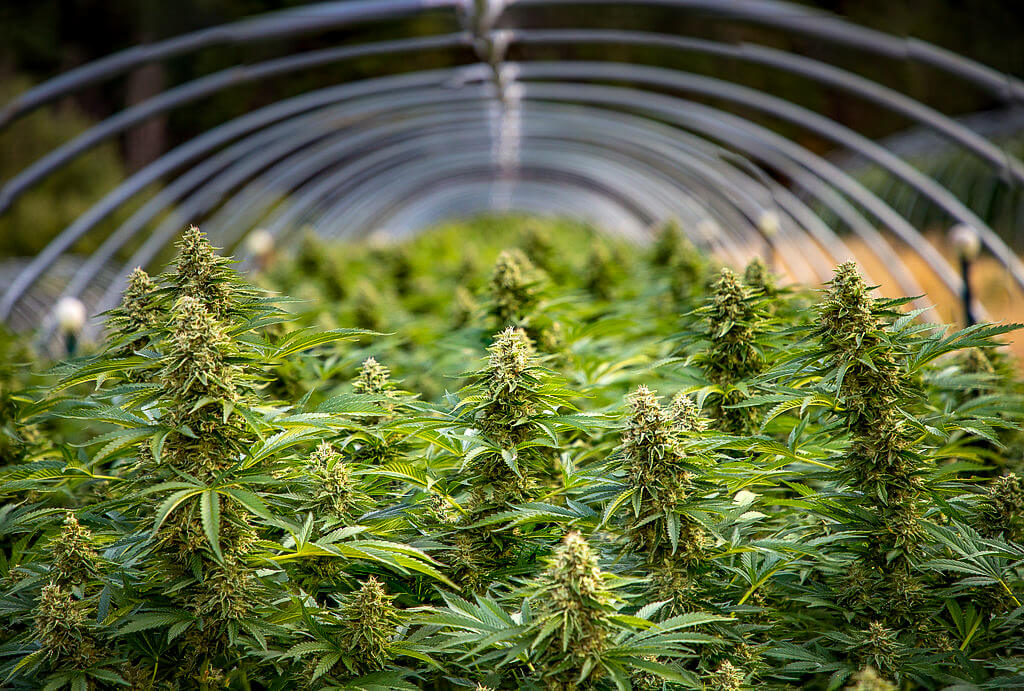
by NCIA’s Facilities Design Committee
Transpiration and VPD are two fundamental components of plant vitality, and heating, ventilation, and air conditioning (HVAC) systems are one of the most critical considerations for an indoor cannabis cultivator. HVAC alone doesn’t tell the full story of environmental control for cultivation facilities. The term HVAC is typically used to refer to the cooling, heating, or ventilation systems in a building, and while it technically includes dehumidification in most forms, it does not directly highlight the significant dehumidification requirements necessary to maintain optimum plant health inside indoor cultivation spaces. In order to emphasize the importance of dehumidification in the mechanical equipment sizing and selection process, the controlled environment horticulture industry would benefit from moving toward the concept of heating, ventilation, air conditioning, and dehumidification (HVACD) as the common term for these systems.
“HVAC” Challenges
The term HVAC is typically used to reference conventional air conditioning and heating systems designed for temperature control to provide a comfortable environment for people. This is clearly demonstrated in the very design of these systems – for example, sensible heat ratios of commercial HVAC equipment are pretty high in order to meet the loads generated by people, lighting, and miscellaneous equipment found in offices. Plants grown in enclosed spaces have different needs than people do. Of particular interest is the large amount of dehumidification that needs to be performed on a daily basis to maintain an optimum vapor pressure deficit (VPD).
When you apply a standard HVAC system to indoor horticulture, the instant the sensible load is removed from the space (i.e. the lights turn off), the air conditioning unit reaches the lower deadband of the specified temperature set point and shuts off. In the process of bringing the temperature down, we have raised the relative humidity to the detriment of the plants. Further, despite being mostly sensible cooling machines, conventional HVAC systems provide most of the dehumidification capacity in an indoor cultivation space, and that capacity is now inactive during the dark period.
Traditionally, growers would install stand-alone, pocket dehumidifiers to handle the moisture removal requirements that the air conditioning units cannot meet. There are a handful of challenges with this approach that can negatively impact plant health when scaling into industrial-scale operations. Most standalone dehumidifiers dry the air with mechanical refrigeration and in the process add hot air into the room, which then needs to be cooled by additional cooling equipment to maintain temperature. Another challenge is the numerous condensate drains throughout the growing space that are high risk for clogging and quickly leading to pest and pathogen proliferation which are potential GMP and GFSI compliance risks. The separate cooling and dehumidification systems typically do not have communication and control amongst them and ultimately “fight” against each other for temperature and relative humidity setpoints. Additional pest vectors can come into play when the HVAC contractor enters the cultivation or curing space to make repairs on mechanical equipment that is mounted above plants. Above all, maintaining cleanliness in the space can be challenging with many mechanical units perched above a dynamic plant canopy.
Dehumidification, or removing humidity from a room that is filled with water vapor as a result of plant transpiration, is arguably the biggest environmental challenge in controlled environment horticulture. When you size an HVAC system for human comfort or server rooms, the primary focus is temperature control (or sensible load). When selecting and sizing an HVACD system for plants to thrive, it’s all about the latent load, plant transpiration and VPD. Excess humidity is roughly twice as difficult to remove as excess heat from lights, so an effective system needs to be designed as a dehumidifier first and an air conditioner second. Integrated dehumidification needs to be at the beginning of every HVAC conversation, and a primary focus of every system.
The benefits of including dehumidification as a critical component
To maximize plant vitality, two fundamental components to understand are transpiration and VPD. Put simply, VPD is the humidity difference (or deficit) between the inside of a leaf and the environmental conditions surrounding that leaf. It is this humidity difference that draws water from the roots of a plant, through the stem and out of the leaf tissue, otherwise known as transpiration. This process is critical to photosynthesis and optimizing plant production, and it’s all directly related to the levels of humidity in a given room. As humidity is drawn out of the leaf, dehumidification must be used to remove the humidity from the environment and maintain appropriate VPD levels. Without dehumidification, humidity builds inside the room, plant growth and plant health are negatively impacted, and conditions become ideal for pests and pathogens.
Properly-designed dehumidification creates consistent and precise environmental conditions across the plant canopy, mitigating risk against issues like powdery mildew and botrytis. Well-executed dehumidification allows growers to control their VPD and drive plant health. At the end of the day, a stable climate sets a strong foundation of cultural control for a facility to maximize quality biomass while limiting crop loss associated with pest and pathogen issues.
Why does this all matter? Because properly sized and commissioned HVACD systems empower the cultivator to maximize production efficiency, reduce the risk of production downtime, and promote growth.
HVACD will change industry standards and best practices
Collectively updating the industry’s knowledge and understanding surrounding dehumidification highlights the true challenges of growing plants indoors, and the need for purpose-built equipment and controls that optimize the environment based on every stage of the plant life cycle. Plants are living organisms that have different needs at different times, and mechanical equipment should be designed and manufactured around this concept.
We can draw a comparison to this concept by looking at indoor horticulture lighting systems. When the industry began to develop new terms like Photosynthetic Photon Flux Density (PPFD), the phrase “PPFD for plants because lumens are for humans” came to be. Meaning that if we are measuring lumens, we are prioritizing people in the space as opposed to the plants. This same mindset should apply to all mechanical equipment involved in a cultivation facility.
Now that more scientific studies and data are becoming available on topics like plant transpiration, dehumidification, and VPD as a driving force in plant vitality, it is clear that there is a better way to think about climate control when applied to controlled environment horticulture. HVAC focuses on the sensible (or temperature) cooling that keeps people happy indoors, while HVACD focuses on the latent cooling (or moisture removal) that keeps plants happy indoors. Both are critical concepts that must be considered during the design of an indoor cannabis cultivation facility to ensure both people and plants are happy indoors.
Critical Dehumidification Requirements for other Rooms in an Integrated Cannabis Grow/Manufacturing Facility
Extending the discussion downstream of horticulture to other areas of the facility, humidity control plays a critical role in profitability, food safety, asset utilization, and operating efficiency.
Humidity control in the Curing Room and the awareness of any air exchange with building areas adjacent to Cure is important. More broadly, any room-to-room pressure differentials can transfer air with different humidity levels.
Food safety is enhanced by considering humidity control, usually dehumidification. Any cold surfaces below the dew point of the room can cause condensation, which can lead to microbiological growth. Room environments controlled so that the water activity (aW) of the cannabis is maintained between 0.55 and 0.65, will also help limit mold growth and the associated mycotoxins.
In many cases, there are special dehumidification requirements, such as in an equipment drying room after warewashing, or to dry out a room and return it to operation after washing and sanitizing. HVACD designers need to coordinate closely with process or manufacturing specialists to be aware of any process exhausts, combustion air requirements, or high outside air exchanges. That additional outside air and the humidity carried in with it, must be considered.
And for Marijuana Infused Products (MIPs), specifically gummies and chocolates, the primary food safety control is low water activity, rather than a robust kill step, so precise humidity control is again a critical issue.
Even further, packaging machinery operates more efficiently if the flow characteristics of the cannabis are a key operating parameter. Moist cannabis will adhere to machinery and create other problems that slow run rates and cause downtime. This problem can occur with any weight fillers or the pre-roll machines.
All told, moisture can be both your friend and foe in a wide variety of cannabis endeavors. The ability to maintain the appropriate relative humidity, in addition to temperature, in each different type of room in a cannabis production facility is a key factor in a successful operation.
The Facilities Design Committee (FDC) focuses on providing NCIA members and regulators a framework and information about facilities design options through which legal producers can plan for GMP level production as the market transitions from a state to a federally regulated industry.
Committee Blog: Recruiting Best Practices for Hiring Leaders to Your Cannabis Business

By Bryan Passman, Hunter + Esquire
Member of NCIA’s Human Resources Committee
Most cannabis businesses are still figuring out how best to recruit key leaders to their organizations who can survive the tests of the cannabis industry.
The ability to effectively hire key leaders who will “stick” with your cannabis business and add incremental value on your leadership team is nothing short of paramount.
Of course, the first steps should be to define the role internally and agree on the desired functional skills and experiences possessed by the ideal candidate, how their success will be measured, and what your selection process will be that will deliver the right candidate experience to land that talent.
But… What X-factors are you screening for when evaluating senior executive candidates in today’s cannabis economy? Here’s a (not so) abbreviated version of our checklist:
A record of accomplishments and a demonstrated ability to get results in a variety of situations under different conditions.
While we are looking for “we” people, as in “here’s what we did,” we are also trying to tease out and understand what they accomplished individually. You (as a leader) led a team to deliver your strategy, but we are looking for what you did personally to create intense focus and drive results, i.e. what levers you pulled to improve revenue and EBITDA, or Earnings Before Interest, Taxes, Depreciation, and Amortization.
Ask probing questions to get beyond the obvious answers.
Ask what they envision your cannabis business should look like in 1-2 years if they were hired and what they are prepared to accept as a consequence of trying to make needed changes. Asking those kinds of detailed questions can help test how committed they are to doing what is required to deliver on their goals. It’s also about asking what they expect the obstacles to success will be and proving their acceptability of being uncomfortable in order to help the organization level up.
Adaptability when there is a pivot point.
While we all want to get it right the first time, there are almost always fine-tuning adjustments that need to be made along the way. We want to know how fast and nimble the leader is at doing that.
Ability to roll-up their sleeves and/or delegate to the right people and then back off while supporting them as-needed.
You owe it to your people (and plants) to give them an opportunity to grow. Permit them to work on stretch projects.
Desire to understand the business holistically, across all departments and levels of the organization.
One of the biggest challenges that leaders face is maintaining a fingertip feel for what people at all levels of the company are thinking. This is especially difficult to maintain with the frenetic pace in the cannabis industry.
Desire being part of the solution, not the problem.
An avoidance of pious judgments. We all need to hold the mirror up more often to ourselves, because people do not listen to us when we start criticizing them. You must take more control and ownership of outcomes within your sphere of influence as a leader in cannabis, and know it’s nearly impossible to hide out successfully behind a computer screen. No guts. No dirty fingernails. No glory.
An ability to say “no” to distractions so there’s time to get the job done.
So many distractions to manage through in the cannabis industry; i.e. There’s always a shiny object to distract in the way of a new vendor solicitation, a new tech to consider, another (virtual) trade show to participate in, the long line of candidates asking for some of your time, etc.
We look for curiosity.
We generally try to get people talking about something that is not directly related to their prior jobs, like how deeply they know their industry or their hobby. We want to know how curious they are to learn more than just what they need to know. Wanting to figure out how things work is so critically important, especially in the nascent cannabis industry.
An appreciation for the importance of being able to question authority and have debates.
Healthy friction and debates almost always get you to a better answer. You are in trouble if part of your culture suppresses disagreement. You want leaders who really want to make sure there is an environment of having open transparent debates rather than surrounding themselves with like-minded friends and family as many first-time founders/leaders have historically done in the cannabis industry.
How they themselves assess talent.
Much of our focus is to get the right leaders in place with strong team-building skills, so we prefer a track record of having people follow them to new companies because that’s always a good sign. A wide range of networks of relationships, well beyond their job, is a good measure of whether they know how to build relationships and collaborate.
Storytelling skills.
We like to learn about the mechanisms they use to mobilize their organizations and their ability to create a direct link between the boardroom strategy and what the average employee’s doing because good things happen when that link is tight.
Those moments in their career where they were forced to reexamine how they develop strategy and how they lead.
We ask about when they have failed. Good candidates will often have a lot of examples to share while others will tell you about one failure and externalize to somebody/something else to carry the blame. This conversation is also a key indicator of innovative thinking and risk-taking ability because those who do take risks are going to fail at times in their careers, and then have a better chance at succeeding in the cannabis industry.
Ability to manage ambiguity because they are not going to have all the answers to the real challenges that are playing out every day.
We are looking for people who have proven that they can deal with ambiguity and can operate outside their comfort zone in increasing areas of grayness. Somebody may be super in their current role, but it may be because it is the work they have always done and they’re in control of that world. If everything is not buttoned-down, they start getting out of their comfort zone and it really shows. What is important is being able to make the transition from controlling everything to building out and operating a completely different model. There are people who can adapt to that and there are people who just freeze and start complaining. “Your attitude defines your altitude.” The cannabis industry will test your attitude.
Comfort with showing vulnerability.
The emergence of vulnerable leadership has been a great pandemic gift. When you are focusing on growth and innovation, as we do on a regularly occurring basis in the cannabis industry, you must take risks. If you are taking risks, you are going to fail some of the time. When we are looking to put someone into a new role or to build out a leadership team, we want to know when that person has taken a risk and failed. What we are trying to understand is someone’s appetite for risk, but we are also interested in whether and how they ask for help. People are generally uncomfortable being vulnerable about the fact that they are making mistakes. We’ve shaped our view around team-building/leaders to focus on wanting people who take risks, because we don’t believe it’s possible to innovate and grow without taking risks; who have failed, because we don’t know how to truly take risks without failing some of the time; and who are really comfortable asking for help. It’s unrealistic to think that with all the talent available to us, that people still feel they have to solve everything themselves when they get stuck.
An ability to ensure their teams are acting like teams.
It is not so much about who gets credit for doing the most or who gets credit for any given task. Ultimately the real credit belongs to the person who is the biggest giver, the most generous, and the one who is most likely to help their teammate get off the mat when they’re down or help them do their job. It is important to remind ourselves and our teams that none of us are as smart as all of us, and we have got to stick together.
How they have led through a crisis.
Because let’s face it… pandemic or not, there’s always an existing or lurking crisis in the cannabis industry and no playbook to lead through it. You must rely on your team, because everyone has something to contribute. Right now, simple acts of kindness from present leaders will be remembered for a very long time. We’re also looking for examples of making decisions to protect the business, which requires making very tough choices to ensure the business has the necessary flexibility to weather the storm. Examples of how they opened the lines of communication with employees; disclosing to them what is known and what is not. Seizing opportunities to build and strengthen relationships with their workforce such as being very understanding of the stress that everyone’s under; staying in touch with those people and being attentive to their needs. Time isn’t on your side during a crisis, so we’re looking for people who have acted and pivoted quickly when something’s not working. Leaders must show up like a duck — calm on the surface but paddling like crazy under the surface to keep it all together. Not everyone has the same tolerance for stress and anxiety. True leaders in a time of crisis rise to the top, just like cream, whereas other people just cannot take it. We seek out people who are calm and focused; people we would want in our lifeboat in a crisis.
Authenticity and the ability to generally work based on unconditional trust with people.
If you must speak truth to power, being authentic helps. Taking everything people say as true on its face will backfire sometimes, but the ability to put up with those occasional moments in order to have most relationships built on trust is paramount. Also, do not gossip. Gossiping is often born of insecurity.
An understanding that leadership is a journey that does not end the moment they hit the C-suite.
For many, that is when the journey begins. We like leaders who know they must continually develop themselves, who don’t rest within their comfort zone, and who push themselves into new and different situations and expand their portfolio. They seek to be expansive. This is especially true for many cannabis c-suite professionals who have little to no previous leadership experience.
The stomach, experience, and awareness to deal with your startup environment.
We seek Builders > Maintainers, and those who are ready to bring a ‘No Limits’ mindset to the challenges ahead. Nearly every cannabis business is an extremely fast-paced environment with little processes and procedures in place. The ability to work under those conditions while beginning to put structure in place is paramount. Leading through enormous amounts of change means having the ability for self-management and helping the team cope with change at warp speed.
WHY interested?
We want talent that’s going to run hard at the opportunity vs. those who are simply running into your opportunity because they are running away from something else and your opportunity is in their path. Ask early and often about their “WHY?” and their DBM’s “Dominant Buying Motives”; i.e. uncovering what is on their Personal, Professional and Financial scorecards and why those things are important.
Finally, we ask ourselves the following questions:
“Would we want to work with/for this person? Would we have confidence in them if we staked our family’s livelihood on them? Do we have confidence in their ability to deliver? Do they have the ability to build a company that we would be proud to be associated with?”
Personally, I like to look at people through the “MIA Test” lens — would I want to be stuck in the Miami International Airport with this person for numerous hours? So much of work is who you work with. Who are the people that you want to be around? I think you are more willing to open up to, question and debate with people who you feel good about and like. However, you must ensure you are not doing this in exchange for harming your diversity and inclusion efforts. It’s not just people who are likeable, but who also think differently and bring different perspectives and experience to the table.
Those are some of our final gut checks while measuring essential skills such as honesty, candor, confidence and courage balanced with hunger and humility, strong verbal and written communication style, emotional maturity/intelligence, self-awareness, responsiveness, listening skills, ability to ask and answer tough questions, ability to receive and apply constructive feedback, and attention to developing other people.
 Bryan Passman is a father, a husband, a trailblazer, and Co-founder and CEO of Hunter + Esquire. My professional background before launching H+E was entirely in retained executive search for 18 years in MedTech/Pharma (15 yrs) and Food and Adult Beverage CPG (3 yrs). My deep knowledge of those highly regulated and nuanced industries has helped H+E significantly understand the needs and wants of our cannabis clients. My deep and genuine networks within those industries have helped us deliver that rare talent “unicorn” our clients desire to fit their particular needs. My client-first approach helps us provide a very customized, white-glove, headhunter treatment to client and candidate.
Bryan Passman is a father, a husband, a trailblazer, and Co-founder and CEO of Hunter + Esquire. My professional background before launching H+E was entirely in retained executive search for 18 years in MedTech/Pharma (15 yrs) and Food and Adult Beverage CPG (3 yrs). My deep knowledge of those highly regulated and nuanced industries has helped H+E significantly understand the needs and wants of our cannabis clients. My deep and genuine networks within those industries have helped us deliver that rare talent “unicorn” our clients desire to fit their particular needs. My client-first approach helps us provide a very customized, white-glove, headhunter treatment to client and candidate.
NCIA’s Human Resources Committee is comprised of Human Resource practitioners devoted to bringing best practices to the cannabis industry. Their focus is educating and bringing awareness to misclassification of employees, promoting guidelines for employee safety, clarification on wage and hour issues in the industry and creating checklists to being a legitimate employer.
Member Blog: Four States Legalized Cannabis in November – Here’s What That Means for the Industry

By Aaron Rosenbluth, Director of Content at Hybrid Marketing Co.
Voters in New Jersey, Arizona, South Dakota, and Montana legalized adult-use cannabis sales during November’s election. So, what comes next?
Last month, Americans in four states voted to legalize adult-use cannabis.
If you’re an adult over 21 in Arizona, New Jersey, South Dakota, or Montana, theoretically, you’ll be able to consume and purchase cannabis legally in 2021.
To many Americans, the end of cannabis prohibition in these states looks like a sudden act of voter mobilization. But industry insiders know it took years of work by activists, business people, and lawmakers to make legalization possible.
Before adults can legally purchase and consume cannabis, lawmakers in each state must outline rules and regulations, and dispensaries must go through intense licensing processes before opening their doors to the public.
The process won’t happen overnight.
In some newly legal states, it could take close to a year to iron out the details. And in the past, it’s taken even longer.
Take Massachusetts, for example. Voters cast their ballots in favor of legalization in 2016, but the first dispensary didn’t open until 2018.
Maine’s citizens also voted in support of legal weed in 2016, but it took four years for the first dispensary to open. The first two retailers – SeaWeed and Theory Wellness – opened on October 8 of this year.
“It has taken four years to move from referendum to retail sales since Mainers narrowly approved the legalization of recreational cannabis at the ballot box in 2016. Legislative rewrites, gubernatorial vetoes, a change in state administration, and then the impact of COVID-19 pandemic have combined to make Maine’s rollout the slowest in U.S. history.” – Portland Press Herald
Lawmakers in New Jersey are trying to speed things up. Democratic Senator Nick Scutari wants to move quickly to pass legislation modeled off a 2019 legal cannabis bill he sponsored. Still, legislators are fighting over the details. New Jersey’s Medical Marijuana licensing policies force applicants to pay large sums to compete for a limited number of licenses, allowing big businesses with deep pockets and holdings in other legal states to make millions.
Some New Jersey lawmakers are trying to keep the same from happening when adult-use dispensaries open their doors by prioritizing local businesses.
Arizona lawmakers anticipate legal cannabis sales to begin as early as March. The state plans to prioritize licenses for owners “from communities disproportionately impacted by the enforcement of previous marijuana laws.” Arizona’s 123 medical marijuana dispensaries will have the first opportunities to apply for adult-use licenses in January after the Arizona Department of Health Services writes the rules.
Entrepreneurs in South Dakota and Montana are ready to apply for dispensary licenses, but they, too, will have to wait.
In South Dakota, lawmakers say dispensaries will be open and selling legal adult-use cannabis by July 1. In Montana, people should be able to legally purchase cannabis on October 1, barring any bumps in the road.
Have we reached a tipping point?
The public’s view of cannabis is changing. One in three Americans now live in a state with legal weed, and, according to a recent Gallup poll, 68% of Americans support federal cannabis legalization. So, have we reached a tipping point?
That’s hard to say.
Thirty-six states now have a legal medical cannabis system. When sales begin in Arizona, New Jersey, South Dakota, and Montana, more than twenty states will have fully legalized cannabis. And while federal cannabis reform might be a defining aspect of the incoming administration’s legacy, legalization is mostly dependent on congress, and it’s still unclear which party will control the Senate next year.
Democratic leaders have pledged to end federal cannabis prohibition. If the Democratic party wins Senate control, full legalization is almost a certainty. But if Republicans maintain their Senate majority, the Republican party’s past approach to cannabis doesn’t indicate their leaders are ready to support far-reaching reform. Still, federal cannabis legalization isn’t outside the realm of possibility, even with a Republican-controlled Senate.
Only time will tell.
And again, regardless of what happens politically, it’s obvious America’s opinion of cannabis isn’t what it once was.
Oprah asked former President Obama if he and Michelle indulged in “pizza, pot, or alcohol” on election night in a recent televised interview. When a television icon casually asks a former President if he smoked weed with the former first lady, you know attitudes are changing.
Could federal cannabis legalization be the key to healing our COVID-ravaged economy?
This year, COVID-19 slowed the progress of cannabis legalization for individual states, but the pandemic could help push federal legalization forward next year. Here’s why.
A federally legal cannabis industry would accelerate America’s economic recovery.
The pandemic has had a catastrophic impact on many industries, and while a lot of employees will return to work, many jobs will be forever lost. The longer it takes for people to find employment, the longer it will take for the economy to recover.
The end of federal cannabis prohibition would create thousands of new jobs and reverse the pandemic’s adverse economic impact.
Here’s a point to consider: according to estimates from New Frontier Data, America’s legal cannabis market could be worth nearly $30 billion by 2025 – and that’s without federal legalization. If government officials choose to end federal prohibition next year, the estimates will increase dramatically.
For cannabis dispensaries, cultivators, cannabis-adjacent businesses (like cannabis marketing agencies), and American citizens, a nationwide end to prohibition would be life-changing.
But again, what the immediate future holds is anyone’s guess.
 Aaron Rosenbluth is Hybrid Marketing Co‘s Content Director, and he loves to write blogs. He’s written so many blogs that he’s lost count. And beyond his skills as a copywriter and storyteller, he’s an obsessive reader and researcher. Aaron writes on subjects ranging from cannabis to collaboration, social equity to HR software, interior design to cybersecurity. His words attract, engage, educate, and convert. Btw, Aaron hates the phrase “content is king” (even though content is king – and queen).
Aaron Rosenbluth is Hybrid Marketing Co‘s Content Director, and he loves to write blogs. He’s written so many blogs that he’s lost count. And beyond his skills as a copywriter and storyteller, he’s an obsessive reader and researcher. Aaron writes on subjects ranging from cannabis to collaboration, social equity to HR software, interior design to cybersecurity. His words attract, engage, educate, and convert. Btw, Aaron hates the phrase “content is king” (even though content is king – and queen).
Hybrid Marketing Co is a Denver-based branding and marketing agency that specializes in building custom strategies that supercharge growth and drive revenue. Working with brands and businesses across the U.S. and Canada, Hybrid’s partners run the full-spectrum of the cannabis world including dispensaries, manufacturers, cultivators, and ancillary businesses. Visit hybridmarketingco.com to learn more about the Hybrid approach.
Member Blog: Augmented Reality CBD, Cannabis Product Labels – Entertainment Paves Path to Education

by Gary Paulin, VP of Sales and Client Services at Lightning Labels
Everyone loves good, entertaining stories. In part, their value lies in information — and education — sticking with recipients long after the storytelling has ended.
There’s a correlation in this to the value of Augmented Reality (AR) CBD and cannabis labels — which provide a novel, entertaining way to capture and keep audience attention. Along the way, product-makers have an opportunity to provide credibility-enhancing education about products, trends, quality control, and the like.
More than ever, consumers want to feel their products protect them. Likewise, cannabis and CBD manufacturer reputation and revenues hinge on consumers feeling safe using their products, and clear about proper (and improper) uses.
Augmented Reality brings interaction and product labeling together, using smart device apps, and even your smart phone’s camera to create an enhanced user experience. When viewers download a related smartphone app and point it at the product’s label, they can see an array of different options including videos, 2D/3D content, social media sharing options, and content that enables seeing how products appear in the real world. A web-based interaction can be launched using your phone’s camera – just open your camera app and point it toward a QR code. In either case, the AR experience is initiated, and interacting with brand labels this way is fun, interesting, and can be extremely educational.
In many ways, it’s like hearing and seeing a story. When connected to useful, practical educational information, AR can fully address common and compelling consumer concerns at a time when fears about safety and health are at an all-time high.
In turn, this can assist manufacturers looking to gain another competitive edge when it comes to consumer awareness, preference, and sentiment. This further strengthens the labels’ role as the front door to product marketing and sales.
TrendHunter.com, dedicated to trend identification, notes that AR is gaining popularity in a variety of industries, ranging from food and beverage to cannabis. Regarding labels, the site notes: “The food and beverage industry adopts augmented reality-based labels… The use of AR in food labels is on the rise, with brands using such technology to both engage and educate their customers on the products they’re considering, or have already purchased. Such items cater to consumers’ continued interest in gamification, and add an element of interactivity that tends to be limited in product packaging.”
TrendHunter.com continues: “Though consumers tend to go online and research the details pertaining to products they purchase, the amount of information to sort through can be overwhelming. Thus, having brands do some of the work in relation to product education allows consumers the freedom to purchase in-person. With tech-integrations into labeling and packaging, this process is streamlined for consumers.”
Specifically targeting cannabis, TrendHunter.com emphasizes: “Virtual and augmented reality enters the cannabis space… The merging of augmented and virtual realities with the cannabis industry is on the rise as brands look to offer immersive experiences for connoisseurs and beginners alike. These platforms offer benefits like virtual product libraries and augmented package engagement — prioritizing both informative and creative experiences for viewers… For novice consumers, being informed about this emerging space is crucial in order to alleviate some of the apprehension they feel when they’re considering consuming a substance that was once attached with stigma and misinformation.”
Here are some hands-on, straightforward ways that AR-powered cannabis and CBD product labels can engage and educate consumers:
- Show products being manufactured, establishing quality controls, purity and other credibility-building examples along the way;
- Relate customer stories and reviews endorsing products, benefits and efficacy;
- Address claims and controversies within the industry or involving the company itself;
- Document complete tracking of products from seed to shelf, proving authenticity and quality control;
- Provide ways (and encouragement) for consumers to interact with a brand via AR;
- Offer easy social media sharing options, so that individual consumers can become brand information hubs via their networks.
 Gary Paulin is VP of Sales and Client Services at Lightning Labels, a Denver-based custom label printer that uses state-of-the-art printing technology to provide affordable, full-color custom labels and custom stickers of all shapes and sizes. Contact: sales@lightninglabels.com; 800.544.6323 or 303.481.2304.
Gary Paulin is VP of Sales and Client Services at Lightning Labels, a Denver-based custom label printer that uses state-of-the-art printing technology to provide affordable, full-color custom labels and custom stickers of all shapes and sizes. Contact: sales@lightninglabels.com; 800.544.6323 or 303.481.2304.
Committee Blog: Why Company Culture is More Important Than Ever Before

by Shawnee Williams, Illinois Equity Staffing
NCIA’s Human Resources Committee
Company executives and human resources professionals often talk about company culture as if it were a faraway planet, dreamy to think about and look at, but impossible to grasp. Now more than ever with a global pandemic and civil unrest, company culture is crucial to the success of a business.
So what is it?
Well simply put, company culture is defined as a set of behavioral and procedural norms observed by an organization. Typically, we use policies, procedures, codes of conduct, values, goals and initiatives to mold and shape our company culture. From the employee relations perspective, company culture is a company’s personality.
What are the different types of company culture?
There are many different types of company culture and some industries tend to gravitate towards certain cultures more often than others. The three main types of company culture are leadership, traditional, and innovative.
Leadership company culture focuses on developing employees and helping them grow in their careers through mentorship and coaching. The main idea is to create an organization of leaders, because as many say, a team is only as strong as their weakest link.
Traditional company culture is the most conventional style of company culture and it tends to get a bad reputation for being “stuffy.” Most folks wear suits and ties, there are a lot of rules and policies in place and there tends to be a clear organizational hierarchy.
The last company culture type, and probably most effective for the cannabis industry, is an innovative company culture. An innovative company culture is focused on the development and innovation in the business. This culture tends to break down the barrier to allow for open communication and transparency. Innovative company culture tends to be inclusive and accepting of individuality. Many innovative and creative employees tend to thrive in this setting and thus do amazing work for innovative companies.
What affects company culture?
Outside of the policies and procedures, there are other factors that shape our company culture including company goals, backgrounds and experiences of the aggregate employee workforce, leadership styles, rewards, and disciplinary systems in place as well as local and national government policies. I’d also add cultural norms with the local and national government, as that heavily affects our company culture. For instance, we often look to Europe with mastering work-life balance due to shorter workweeks and longer maternity leaves.
The backgrounds and experiences of the aggregate workforce is also a huge factor we often overlook. If we have an unconscious bias on our recruitment team, chances are, the entire organization will mirror that make-up, backgrounds, and experiences of the in-house recruiters, which leads to a lack of diversity across the board.
Why is company culture important?
Company culture within an organization separates the successful businesses from the failing businesses. In fact, poor company culture will almost always result in high turnover, poor customer experience, disengaged employees, lower morale and eventually lower profitability.
What is Human Resources’ role in company culture?
What can you do as a human resources professional within an organization to support company culture?
- Carry out organizational values day-to-day
- Effectively communicate company culture through recruiting and new hire processes
- Clearly define roles and responsibilities of each employee within the organization
- Provide continuous learning and development
- Sustain reward and recognition systems
- Administer and maintain performance management
What can Human Resources Assess and Develop Company Culture?
Many organizations harness the power of employee experience survey instruments to determine the success (or failure) of their company culture. After developing an appropriate assessment tool, the next step is to administer the assessment properly. Be sure there’s a goal for participation and a plan of action to attack following up with employees who haven’t completed the assessment.
This is where a lot of organizations fall off. After obtaining responses, you must analyze and actually communicate the results of the survey in a town hall. From there, you work on your areas of opportunity in focus groups within the organization. Most focus groups consist of volunteers from all departments and different levels of seniority and experience.
The next step is to actually take action and begin implementing changes that can improve your areas of opportunity addressed in the survey. This assessment process is iterative, so after following through with suggested changes, you follow up routinely with the same assessment. While this process seems daunting, it shows your employees that you actually care about their experience and want to improve as an employer.
As we continue to develop and evolve as an emerging industry, keep company culture at the forefront of your efforts. Remember, if you take care of your employees, they will take care of your customers, and that growth and profits will absolutely come naturally.
 Rashaunah “Shawnee” Williams is the co-founder at Illinois Equity Staffing, an MBE and WBE firm based in Chicago, that supports the cannabis industry in education, job placement, human resources, payroll and social equity & diversity compliance. Shawnee and her business partner Lynette Johnson founded Illinois Equity Staffing because they understood the barriers to entry for lower and middle-class people, minorities and women in the cannabis industry. Both having the “Corporate America” background, Shawnee and Lynette, understand the pain points of this population, as they both grew up in disproportionately impacted areas and are minority women. It’s this perspective that has allowed Illinois Equity Staffing to bridge the gap and create a more equitable cannabis industry in Illinois. She is a member of IWC, Chicago NORML, MCBA, the Cannabis Equity Coalition, Cannabiziac, and BIPOCANN. She also serves on the Human Resources Committee with the National Cannabis Industry Association and the advisory board of Cannabiziac.
Rashaunah “Shawnee” Williams is the co-founder at Illinois Equity Staffing, an MBE and WBE firm based in Chicago, that supports the cannabis industry in education, job placement, human resources, payroll and social equity & diversity compliance. Shawnee and her business partner Lynette Johnson founded Illinois Equity Staffing because they understood the barriers to entry for lower and middle-class people, minorities and women in the cannabis industry. Both having the “Corporate America” background, Shawnee and Lynette, understand the pain points of this population, as they both grew up in disproportionately impacted areas and are minority women. It’s this perspective that has allowed Illinois Equity Staffing to bridge the gap and create a more equitable cannabis industry in Illinois. She is a member of IWC, Chicago NORML, MCBA, the Cannabis Equity Coalition, Cannabiziac, and BIPOCANN. She also serves on the Human Resources Committee with the National Cannabis Industry Association and the advisory board of Cannabiziac.
Member Blog: Rolling Out Legal Cannabis in New Jersey – 15 Key Points from the Proposed Law

by Charles J. Messina, Esq. and Daniel Pierre, Esq. of Genova Burns LLC
Many are thrilled that the Garden State will finally allow recreational use of cannabis for adults aged 21 years and older. Before recreational use can become legal, however, we have to wait for Trenton to pass a law that will regulate New Jersey’s cannabis marketplace. Determined to get the ball rolling, Senators Nicholas Scutari and Stephen Sweeney recently introduced a 200+ page bill, S-21, to start the process for legalization. This article highlights major points from the bill you should know if you’re looking to join this emerging industry.
-
Is adult-use (recreational) of cannabis currently legal in New Jersey?
No. Although New Jersey voters approved the referendum that amended the State Constitution to legalize the recreational use of cannabis for adults age 21 years and older, recreational use is not legal until New Jersey lawmakers pass a bill that regulates recreational use of cannabis.
-
When will New Jersey lawmakers pass the enabling law?
It is uncertain when the enabling law will pass. But Senator Nicholas Scutari said he wants the bill to hopefully pass before the end of this month. Two days after the referendum passed in New Jersey, he and Senator Stephen Sweeney introduced Bill S-21 – “New Jersey Cannabis Regulatory, Enforcement Assistance, and Marketplace Modernization Act.” If passed, the bill will legalize the personal use of cannabis for adults subject to regulation by the Cannabis Regulatory Commission.
-
What is the Cannabis Regulatory Commission (CRC)?
The CRC is a panel of five appointed individuals who will be responsible to oversee the development, regulation, and enforcement of use and sale of cannabis in New Jersey. The CRC will also implement the legislation that Governor Murphy will ultimately sign to legalize recreational use within the state.
As of today, only two appointees have been named – Dianna Houenou, who will serve as the CRC Chair, and Krista Nash as a member. Although we are still waiting for the remaining three members to be named, we know that Jeff Brown – the Assistant Commissioner of the Department of Health, who currently leads the medicinal marijuana program in New Jersey – has been tapped to become the first Executive Director of the CRC.
-
What are the CRC’s powers?
The CRC has the authority to, among other things, adopt, amend or repeal regulations that control the cannabis marketplace. It can also grant, refuse, suspend, revoke, cancel, or take actions otherwise limiting licenses or conditional licenses related to cannabis.
-
What are the different types of cannabis licenses contemplated in the proposed legislation?
Currently, there are six classes of licenses:
- Class 1 Cannabis Grower license – permits growing, cultivation, or production of cannabis in New Jersey.
- Class 2 Cannabis Processor license – permits manufacturing, preparing, and packaging of cannabis.
- Class 3 Cannabis Wholesale license – permits the storage and sale of cannabis strictly for resale.
- Class 4 Cannabis Distributor license – permits the intrastate transportation of cannabis in bulk.
- Class 5 Cannabis Retailer license – permits the sale of cannabis directly to members of the public.
- Class 6 Cannabis Delivery license – permits delivery of cannabis from a retailer to the public.
Also, the bill was recently amended to allow the CRC to create a new license category.
-
Can individuals or small businesses apply for any of the licenses?
Yes. Under the current version of the bill, at least 25% of the total number of licenses in each class are reserved solely for microbusinesses. “Microbusiness” is defined as a person or entity with business operations that employ no more than 10 employees. Reserving 25% of licenses for small businesses is intended to, among other things, prevent interstate megabrands from completely dominating the marketplace in New Jersey.
-
Are there any restrictions placed on microbusinesses?
Yes, in order to qualify as a microbusiness under the proposed legislation, you cannot process more than 1,000 cannabis plants each month, operate a cannabis establishment that occupies more than 2,500 square feet, or acquire more than 1,000 pounds of cannabis in dried form for retail, resale, or processing each month.
-
Can I personally grow cannabis from my house for personal use or retail?
No. There is currently no “home grow” component to the bill.
-
Can I hold two classes of licenses concurrently?
As currently written, there are certain restrictions with respect to holding two classes of licenses concurrently. In particular, once retail sales of cannabis begin, there is supposed to be an 18-month limitation on the number and classes of licenses any one licensee may hold. During this 18-month period, the current bill prohibits a licensed grower, processor, wholesaler, distributor, or delivery service licensee to also become a licensed retailer, and vice versa. Also, a grower or processor may only concurrently hold two licenses – either another grower or processor license – for now.
-
How do I apply for a license?
Not so fast…first, the remaining appointment of the CRC Commissioners needs to happen along with the promulgation of regulations by the CRC. Then at some point in 2021, an application round for licenses should be announced. Each application for an annual license to operate a cannabis business must be submitted to the CRC. A separate license or conditional license will be required for each location where a cannabis establishment seeks to operate (or for the location of each premises from which a cannabis distributor or delivery service seeks to operate). Renewal applications for another annual license may be filed up to 90 days prior to the expiration of the establishment’s, distributor’s, or delivery service’s license.
-
What should I be doing now to prepare for obtaining a license?
Too much to write in one paragraph! But, after forming your application team and getting your corporate formation ducks in a row, one of the first things you should be thinking about is location.
-
Does that mean municipal approval is required in order to open a cannabis business?
Good guess. The CRC will require proof of local support for the suitability of the location of your proposed cannabis business. There were 70+ municipalities that were intending to ban canna-businesses. This number is likely to drop as municipalities should be able to charge up to a 2% tax on cannabis sales, which can help plug the deficit gap related to the ongoing COVID-19 pandemic and further other social justice initiatives.
-
Speaking of taxes, how will cannabis be taxed once regulated?
According to the referendum, cannabis products would be subject to New Jersey’s sales tax (i.e., 6.625%), in addition to the potential local tax of up to 2%. As the bill is currently drafted, the sales tax revenue is supposed to be used to administer the cannabis program and reimburse police departments for training costs associated with enforcing the law. There may also be an additional tax imposed on cultivators, and that revenue would likely be directed to social equity initiatives.
-
Will the CRC prioritize applications based on location?
Yes. The CRC is supposed to prioritize applications on the basis of impact zones, for which past criminal marijuana enterprises contributed to higher concentrations of law enforcement activity, unemployment, and poverty. The bill defines an “impact zone” as any municipality that has a population of 120,000 residents and ranks in the top 40 percent of municipalities in New Jersey for cannabis related arrests.

Daniel Pierre is an Associate in Genova Burns’ Newark, NJ office and a member of the Cannabis and Labor Law Practice Groups. In addition to labor work, he likewise assists clients in the cannabis industry, from analyzing federal and state laws to ensure regulatory compliance for existing businesses to counseling entrepreneurs on licensing issues.
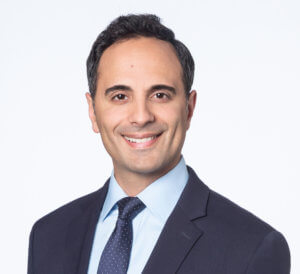 Charles J. Messina is a Partner at Genova Burns LLC and Co-Chairs the Franchise & Distribution, Agriculture and Cannabis Industry Groups. He teaches one of the region’s first Cannabis law school courses and devotes much of his practice to advising canna-businesses as well as litigating various types of matters including complex contract and commercial disputes, insurance and employment defense matters, trademark and franchise issues and professional liability, TCPA and shareholder derivative actions.
Charles J. Messina is a Partner at Genova Burns LLC and Co-Chairs the Franchise & Distribution, Agriculture and Cannabis Industry Groups. He teaches one of the region’s first Cannabis law school courses and devotes much of his practice to advising canna-businesses as well as litigating various types of matters including complex contract and commercial disputes, insurance and employment defense matters, trademark and franchise issues and professional liability, TCPA and shareholder derivative actions.
For over 30 years, Genova Burns has partnered with companies, businesses, trade associations, and government entities, from around the globe, on matters in New Jersey and the greater northeast corridor between New York City and Washington, D.C. We distinguish ourselves with unparalleled responsiveness and provide an array of exceptional legal services across multiple practice areas with the quality expected of big law, but absent the big law economics by embracing technology and offering out of the box problem-solving advice and pragmatic solutions.
Given Genova Burns’ significant experience representing clients in the cannabis, hemp and CBD industries from the earliest stages of development in the region, the firm is uniquely qualified to advise investors, cultivators, processors, distributors, retailers and ancillary businesses.
Committee Blog: Leading With Heart

by Nichole McIntyre, SPHR, SHRM-SCP, Director of Human Resources at urban-gro
Member of NCIA’s Human Resources Committee
Want to inspire? Lead from the heart.
I recently attended the Empower 2020 virtual conference where Claude Silver of VaynerMedia held a fireside chat. She is the first person in a professional capacity to have the title “Chief Heart Officer.” What I heard from Claude over the next hour was energizing, though she claims she doesn’t see herself as an inspirational leader. Her modesty came through tenfold as she spoke about her journey toward her role at VaynerMedia, and the lessons she learned along the way. Claude never aspired to have a career in Human Resources, in fact, she doesn’t even consider herself an HR professional. Her message came through loud and clear – it is about the people. Plant the right seeds, and watch them grow. The success of VaynerMedia is undeniable, and it starts at the top by leading with heart. I was definitely inspired.
How many times have we heard it? Business is business, it is not personal. This type of thinking has largely contributed to the state of affairs in which we now find ourselves, which is a heightened state of anxiety in the workforce. The time to start making things personal, and lead with the heart, is at a tipping point. Seize this moment to let employees know you care about the whole person and not just the worker.
All of our working norms have been turned upside down, and it is no wonder there’s a secondary plague of anxiety with a new focus on mental health and employee well-being. With the seismic shift to remote work, many employees have assumed multiple additional responsibilities, in and outside of the office. For working parents, the additional stress of remote learning has caused concern about their abilities to maintain performance levels at work. For some, there is a daily anxiety when it comes to choosing between job responsibilities and engaging as a parent toward the educational development of their children – a choice no one wants to be required to make. Talking with employees to understand both professional goals and personal circumstances is critical.
Increase Communication.
People have an innate longing to connect. Yes, even the introverts. There has never been a better time to increase communication and ensure best practices, such as 1:1’s, employee development, and performance evaluations are taking place. Employees need to hear feedback and understand how their contributions and performance are viewed by both their direct manager and the company, as well as instilling a sense of purpose by identifying how these contributions impact the overall health and strategy for the organization.
Open Yourself Up To Vulnerability.
During these touchpoints, do a lot more listening. Employees need to feel free to communicate anxieties, fears, or concerns. You can model vulnerability by putting yourself out there and sharing your own experience. As a leader, it is your responsibility to create a space where employees feel safe to share information that may be perceived as uncomfortable. When you create the ideal employee ecosystem for each individual, employees are happier, engaged, and more creative. Your company will not only foster an exceptional culture, but you will also reap the rewards financially and improve your reputation in the market.
Invest In Their Development.
Let your employees know you are invested in them and you care about their development. Take advantage of free webinars, launch a book club initiative or a mentorship program. These types of development opportunities have very little cost to the organization, yet reap solid rewards. Further, these initiatives also provide a connection point where insights can be gleaned and you can understand prospects for development that matter most to your employees. These conversations are unique to each individual, as we all have different learning styles, interests, and skillsets on which to focus.
As I mentioned earlier, treating the whole human is critical at this time. Over the past six months, we have become armchair therapists as we help employees navigate an unknown world. Leaders who have the ability to flex their style to meet the needs of their employees will experience a higher level of success and happiness in their teams and business. Ensuring employees have all the tools necessary to navigate the complexities forced upon us overnight is essential. Employee Assistance Programs (EAP) are a good example and typically low cost in comparison to the value they provide. These programs not only provide the mental health benefits needed for employees to navigate life’s challenges but often make leadership and employee development tools available as part of the package.
Becoming an employer of choice is a choice you can make. Companies must do things that set themselves apart from others and capitalize on what makes them unique. We need to stop expecting a square peg to fit into a round hole and individuality should be valued. As leaders, we must adapt to the needs of the workforce, embrace diversity, and value the unique talents each person brings into the organization.
Collectively, we have chosen to work within an industry still fighting for legitimacy. We have the opportunity in a new industry to set the standard rather than follow the status quo, and have certainly followed unconventional methods to get here. Setting the trends for employee well-being and exceptional workplaces can be the imprint we leave on the fabric and future of the working world. We are finding ourselves under a tidal wave of change. The opportunity is before us, let us meet the moment and lead with heart.
I will leave you with a poignant thought from another inspirational and exceptional leader: “I’ve learned that people will forget what you said, people will forget what you did, but people will never forget how you made them feel.” ― Maya Angelou
 Nichole McIntyre is the current Chair of the NCIA Human Resources Committee and Human Resources Director for urban-gro, Inc., a leading engineering design services company and system integrator. Nichole spent the bulk of her 20+ years in Human Resources in the Consumer Products Manufacturing industry, and intentionally pivoted her direction and passion for Human Resources to the Cannabis Industry in 2018. Her goal is to elevate the perception of both Human Resources and the Cannabis Industry through advocacy, engagement, leadership, and coaching. Nichole has served on the NCIA Human Resources Committee since 2018, and was an avid supporter of SAFE Banking legislation during the 2019 NCIA Lobby Days event in Washington D.C. Nichole holds both SPHR and SHRM-SCP Certifications and a Bachelor’s of Science in Business Administration from DeVry University. She is also currently enrolled at Keller Graduate School of Management, where she is just 4 classes away from obtaining her Master’s in Human Resources Management.
Nichole McIntyre is the current Chair of the NCIA Human Resources Committee and Human Resources Director for urban-gro, Inc., a leading engineering design services company and system integrator. Nichole spent the bulk of her 20+ years in Human Resources in the Consumer Products Manufacturing industry, and intentionally pivoted her direction and passion for Human Resources to the Cannabis Industry in 2018. Her goal is to elevate the perception of both Human Resources and the Cannabis Industry through advocacy, engagement, leadership, and coaching. Nichole has served on the NCIA Human Resources Committee since 2018, and was an avid supporter of SAFE Banking legislation during the 2019 NCIA Lobby Days event in Washington D.C. Nichole holds both SPHR and SHRM-SCP Certifications and a Bachelor’s of Science in Business Administration from DeVry University. She is also currently enrolled at Keller Graduate School of Management, where she is just 4 classes away from obtaining her Master’s in Human Resources Management.

 Author Jackie Berg is the publisher of the Health Hub, a publication division of CBD Marketing Hub, as well as the publisher of TheHUB Detroit, TheHUB Flint and recipient of the Association of Women in Communications 2018 Vanguard award. To learn more CBD Marketing Hub, a cultivator of CBD and cannabis clients, visit its website or reach out at hello@cbdmarketinghub.com.
Author Jackie Berg is the publisher of the Health Hub, a publication division of CBD Marketing Hub, as well as the publisher of TheHUB Detroit, TheHUB Flint and recipient of the Association of Women in Communications 2018 Vanguard award. To learn more CBD Marketing Hub, a cultivator of CBD and cannabis clients, visit its website or reach out at hello@cbdmarketinghub.com.








 Melissa Hafey is the Director of Human Resources for Blackbird. Blackbird is a software and services company that provides marketing tools and transportation solutions for cannabis operators. Melissa is a passionate advocate for creating meaningful work in rewarding work environments. Her experience includes change management, benefits administration, HRIS implementation, recruiting, workplace diversity initiatives, and human resources management across multiple states including California.
Melissa Hafey is the Director of Human Resources for Blackbird. Blackbird is a software and services company that provides marketing tools and transportation solutions for cannabis operators. Melissa is a passionate advocate for creating meaningful work in rewarding work environments. Her experience includes change management, benefits administration, HRIS implementation, recruiting, workplace diversity initiatives, and human resources management across multiple states including California.
 Michael Williamson is the
Michael Williamson is the 

 Jon Monk is the Managing Director at
Jon Monk is the Managing Director at 
 John Shearman is Vice President of Marketing and Cannabis Business Lead at
John Shearman is Vice President of Marketing and Cannabis Business Lead at 


 Excerpt from
Excerpt from 
 Charles J. Messina
Charles J. Messina Jennifer Roselle
Jennifer Roselle Daniel Pierre
Daniel Pierre
 Lindsey Griffith is the Creative Content Specialist at
Lindsey Griffith is the Creative Content Specialist at 



 Eric Sklar is an entrepreneur, Napa Valley vineyard owner and public official. He and his family have been growing grapes in Napa Valley for 40 years and he planted his first licensed cannabis garden in 2018. Eric is the CEO and co-founder of
Eric Sklar is an entrepreneur, Napa Valley vineyard owner and public official. He and his family have been growing grapes in Napa Valley for 40 years and he planted his first licensed cannabis garden in 2018. Eric is the CEO and co-founder of 
 Jimmy Young is the founder of
Jimmy Young is the founder of 
 As a country, the U.S. is experiencing what can best be described as the “age of distrust.” While public distrust in institutions has been escalating for at least a decade, according to the annual Edelman Trust Barometer which has tracked trust in media, governments, businesses, and nonprofits since 2000. Social unrest and a global pandemic have escalated this distrust. Never has the public eyed institutions or businesses with such suspicion.
As a country, the U.S. is experiencing what can best be described as the “age of distrust.” While public distrust in institutions has been escalating for at least a decade, according to the annual Edelman Trust Barometer which has tracked trust in media, governments, businesses, and nonprofits since 2000. Social unrest and a global pandemic have escalated this distrust. Never has the public eyed institutions or businesses with such suspicion.  Tara Coomans is the CEO of
Tara Coomans is the CEO of 
 Kary Radestock, CEO, launched
Kary Radestock, CEO, launched 

 Jacob Carlson is the Co-Founder and CEO of
Jacob Carlson is the Co-Founder and CEO of  The future is coming and the cannabis (marijuana and hemp) industry is uniquely positioned to offer innovative approaches to best management practices in its manufacturing sector. In 2021, the National Cannabis Industry Association’s Cannabis Manufacturing Committee formed a new group focused on addressing sustainable practices, legal protections, and policy considerations to future-proof your cannabis manufacturing business. The series,
The future is coming and the cannabis (marijuana and hemp) industry is uniquely positioned to offer innovative approaches to best management practices in its manufacturing sector. In 2021, the National Cannabis Industry Association’s Cannabis Manufacturing Committee formed a new group focused on addressing sustainable practices, legal protections, and policy considerations to future-proof your cannabis manufacturing business. The series, 


 Charlotte Peyton supports
Charlotte Peyton supports 

 Bryan Passman is a father, a husband, a trailblazer, and Co-founder and CEO of
Bryan Passman is a father, a husband, a trailblazer, and Co-founder and CEO of  Aaron Rosenbluth is
Aaron Rosenbluth is 
 Gary Paulin is VP of Sales and Client Services at
Gary Paulin is VP of Sales and Client Services at  Rashaunah “Shawnee” Williams is the co-founder at
Rashaunah “Shawnee” Williams is the co-founder at 



 Nichole McIntyre is the current Chair of the NCIA Human Resources Committee and Human Resources Director for
Nichole McIntyre is the current Chair of the NCIA Human Resources Committee and Human Resources Director for